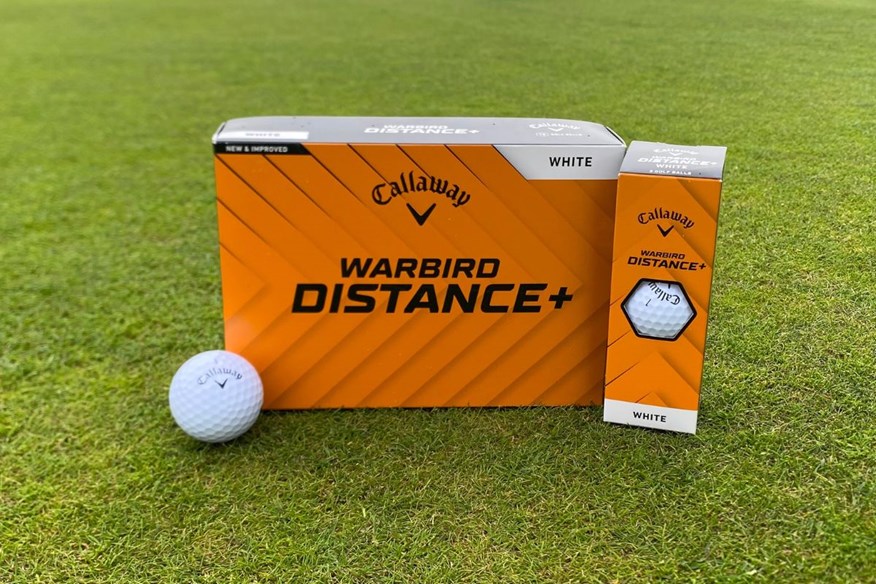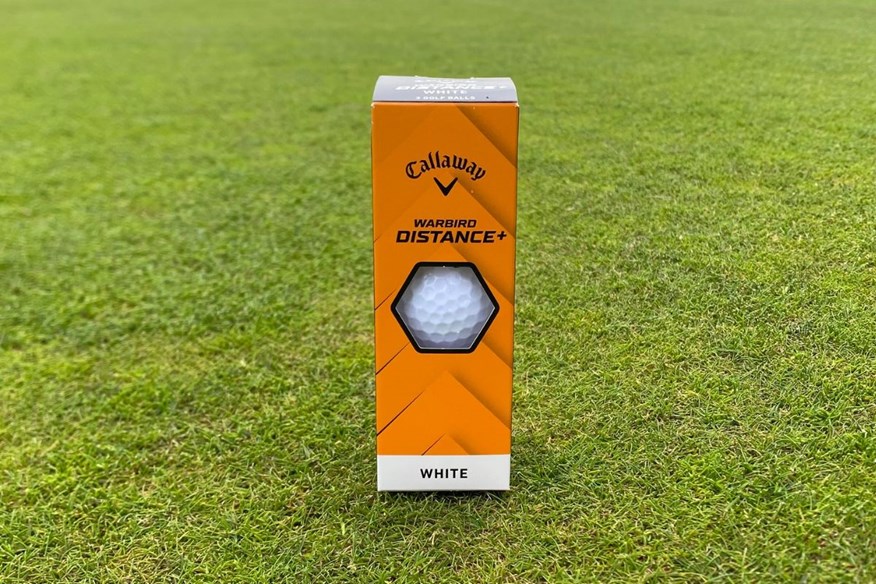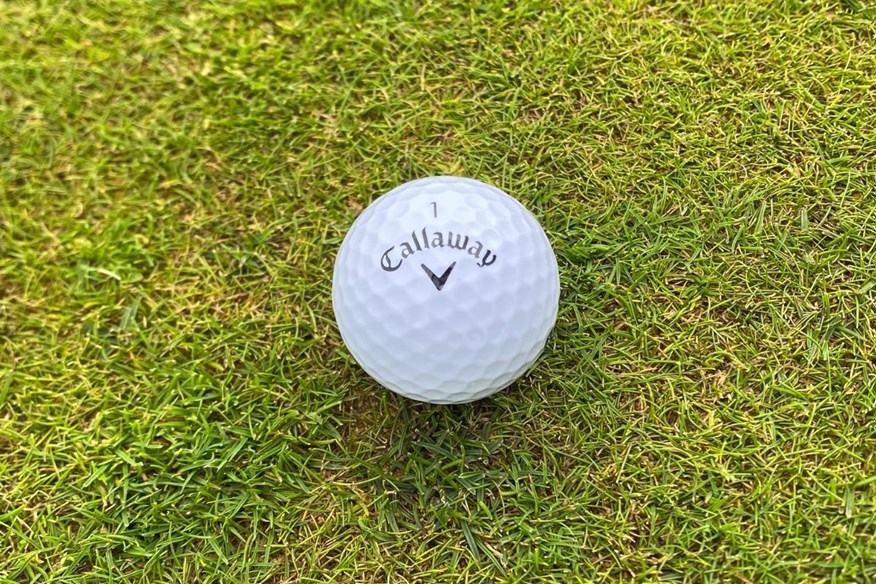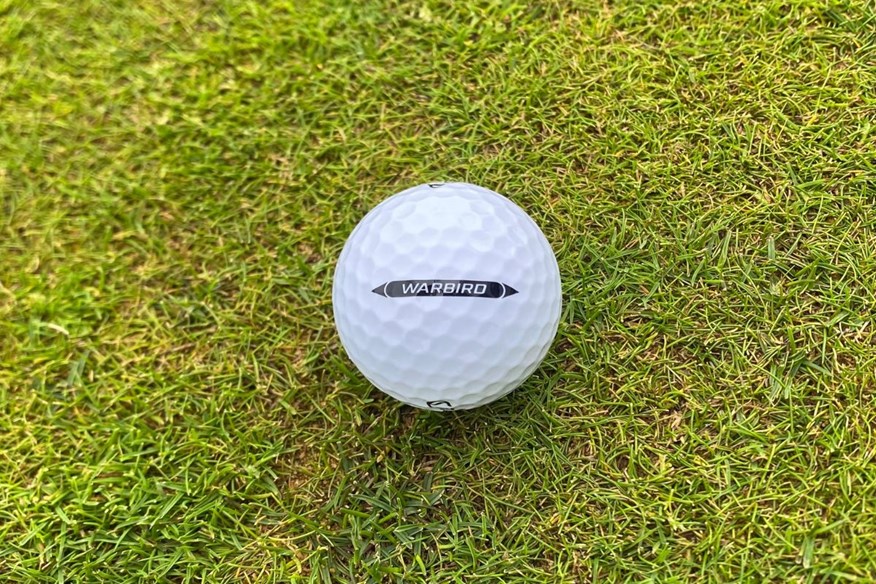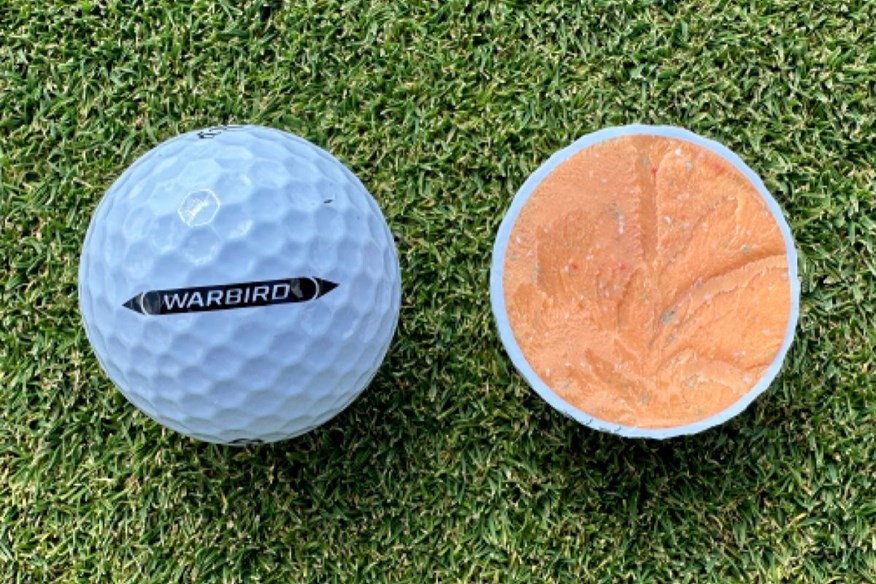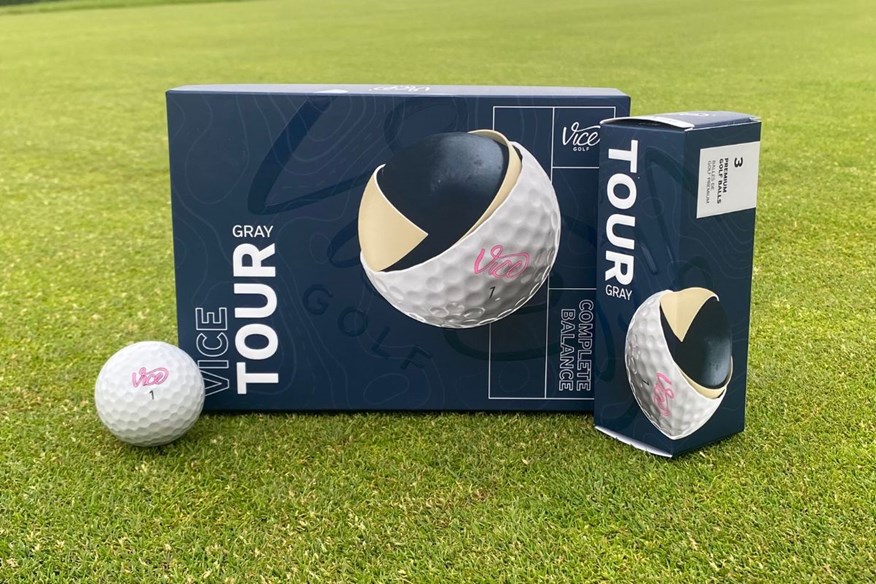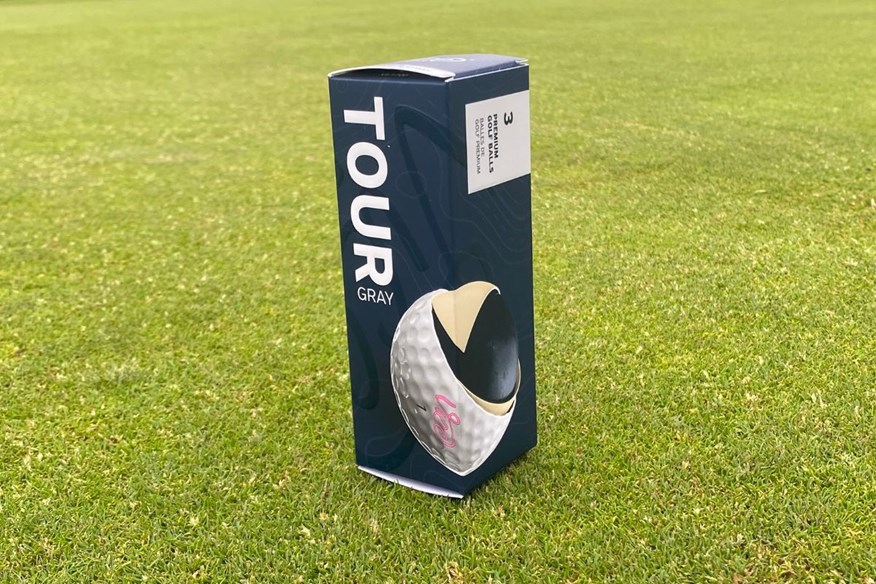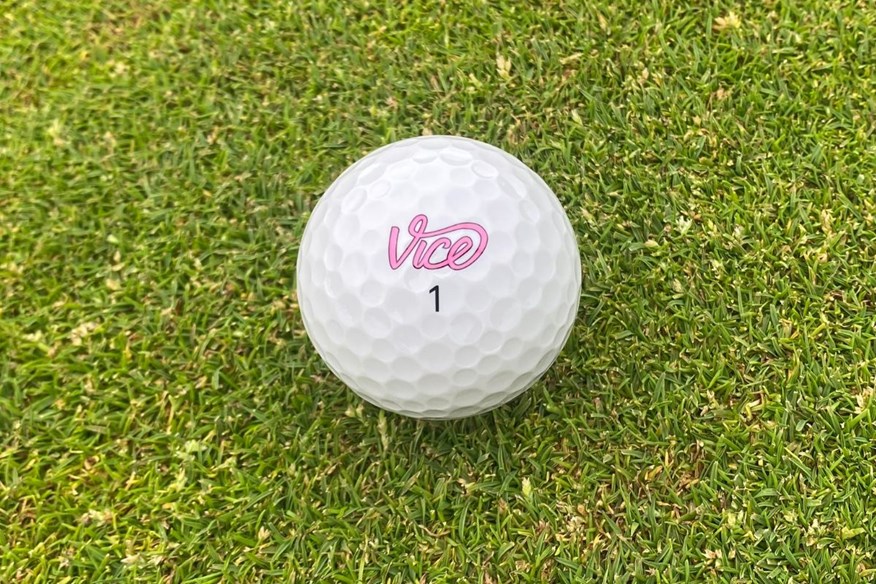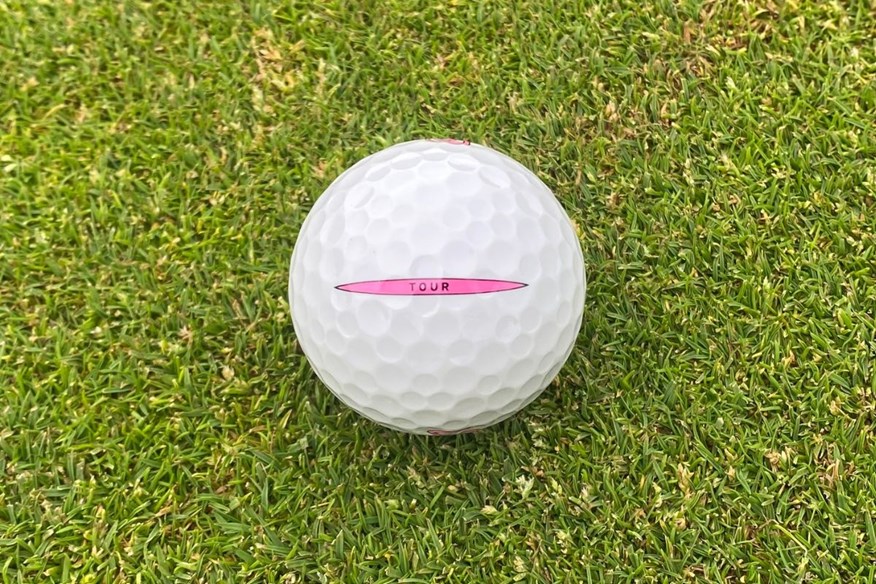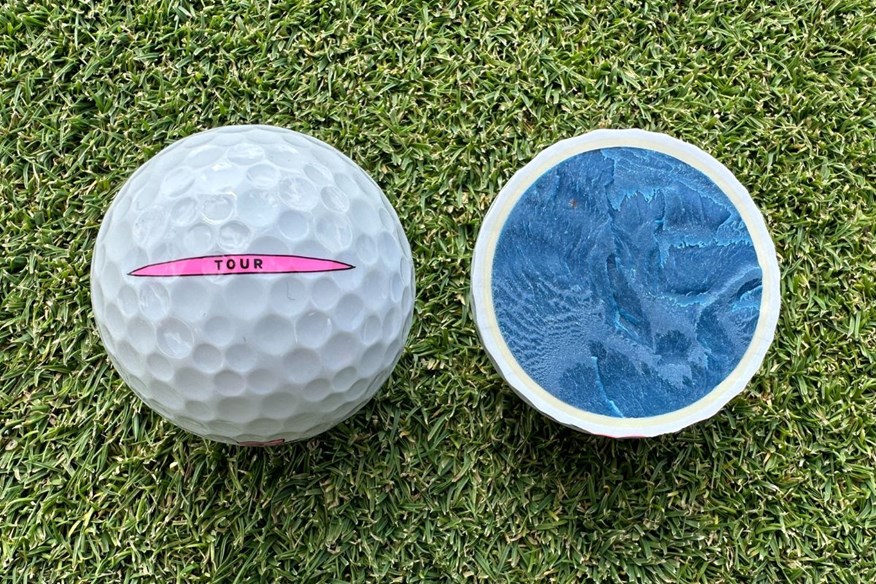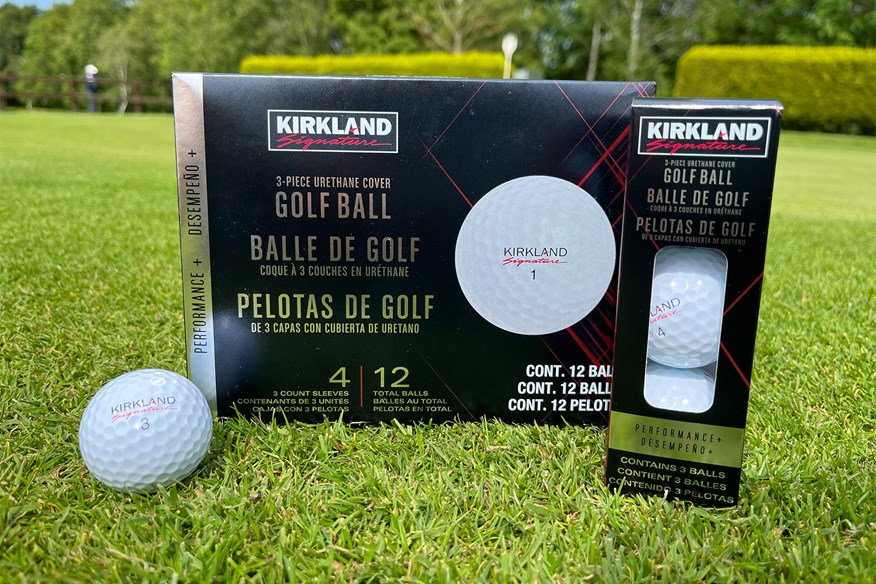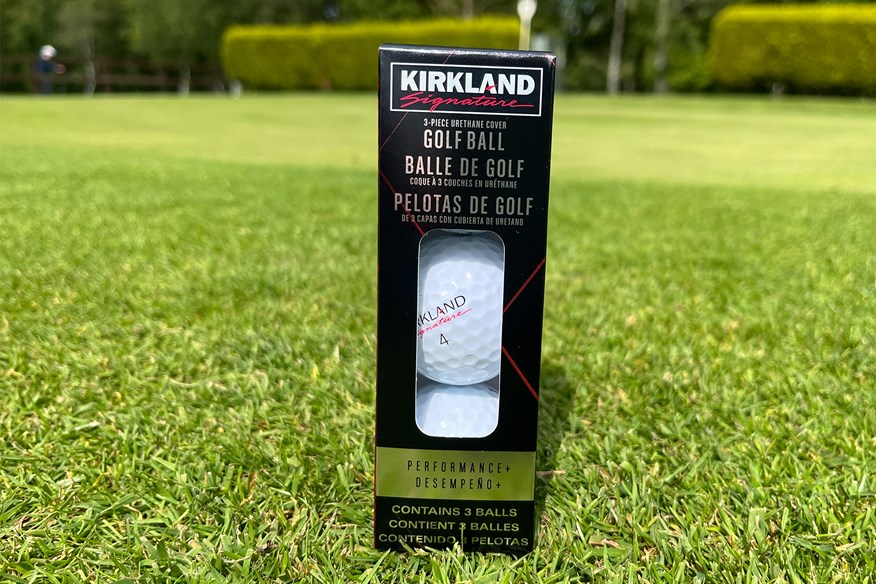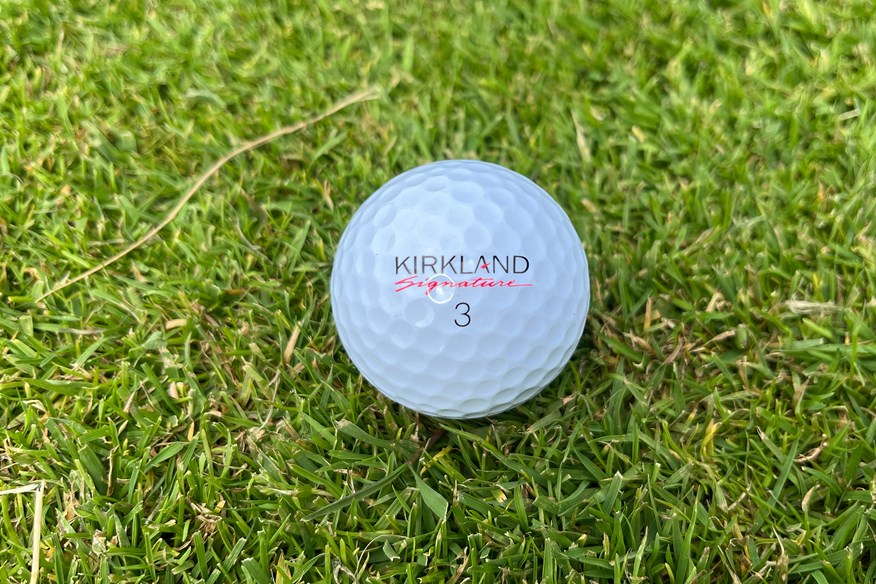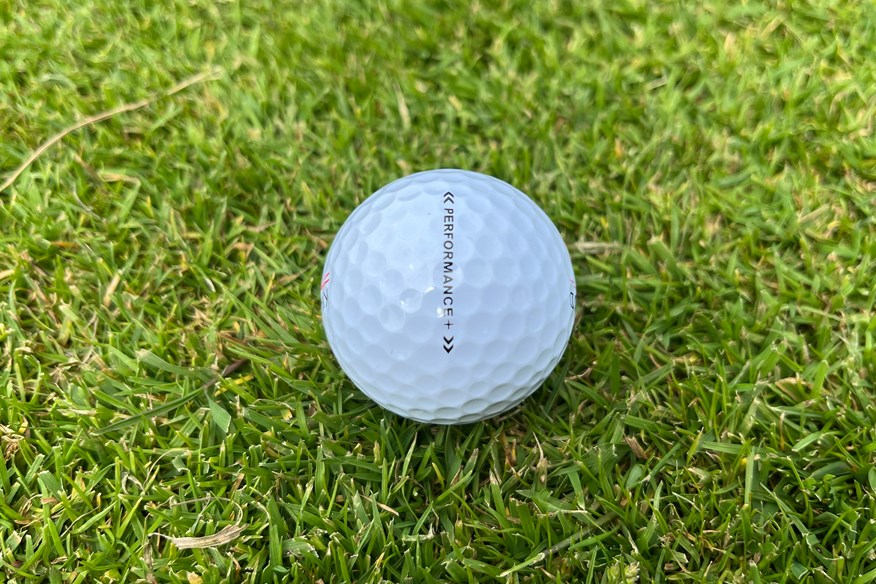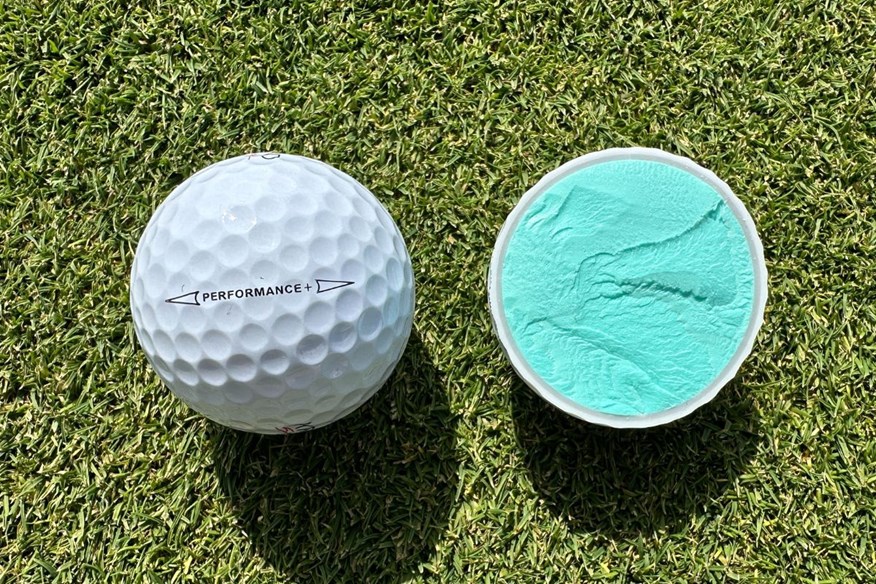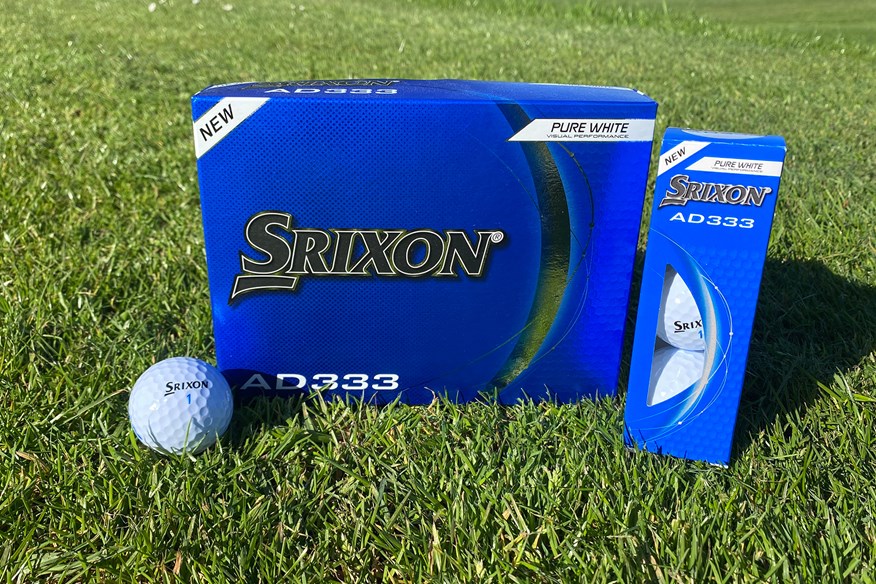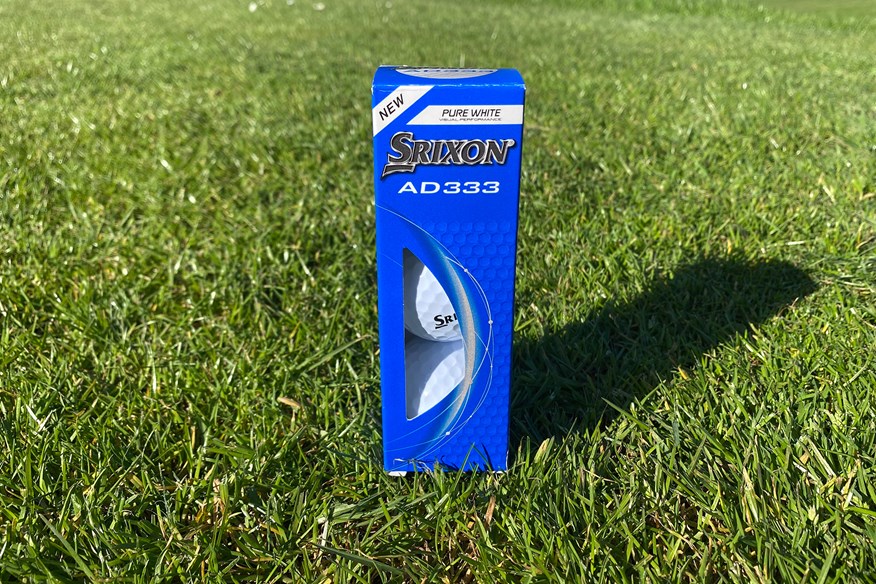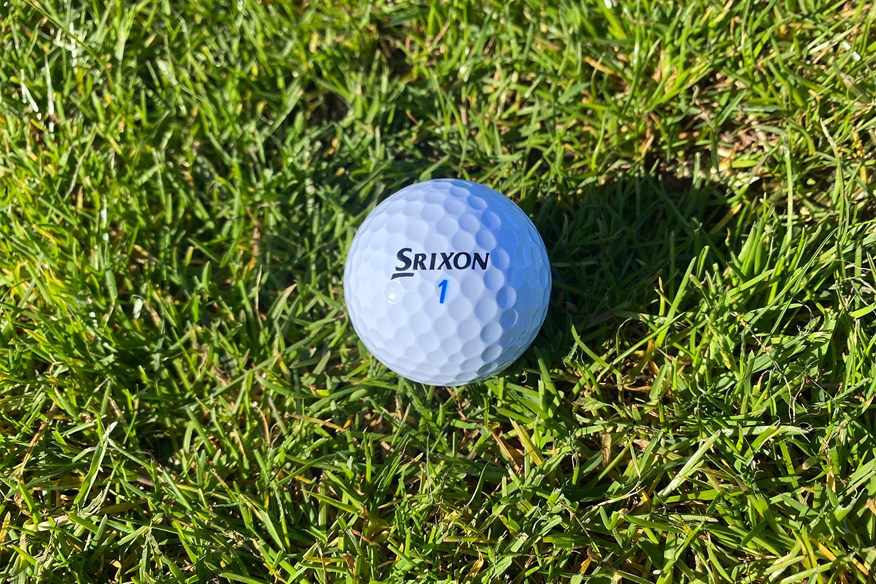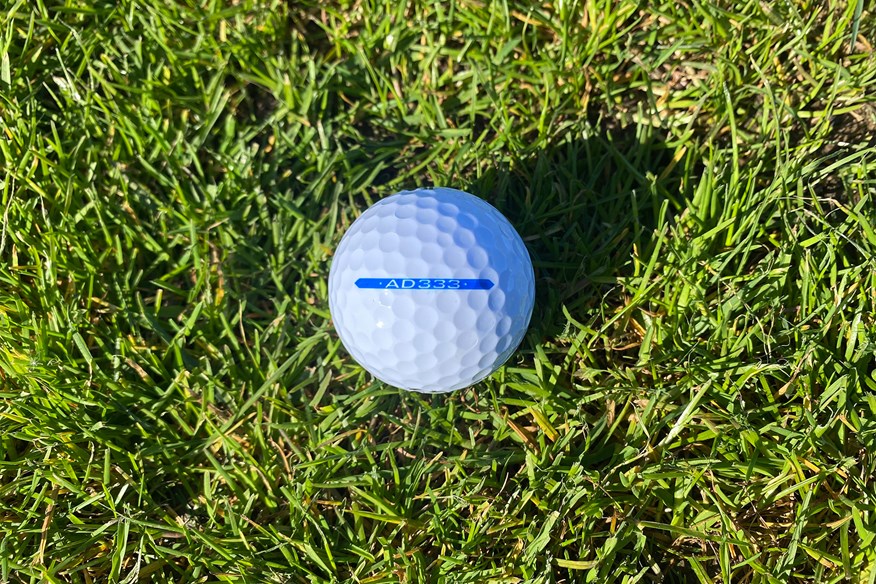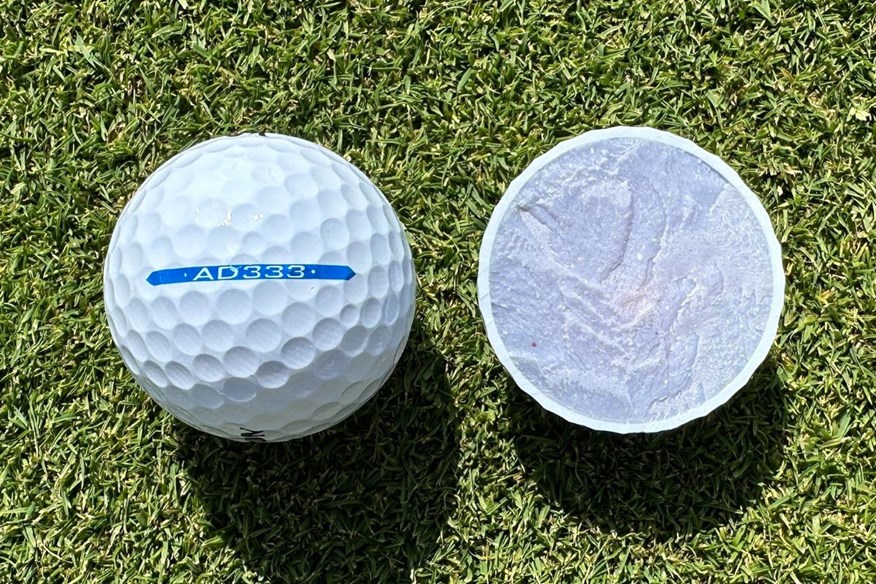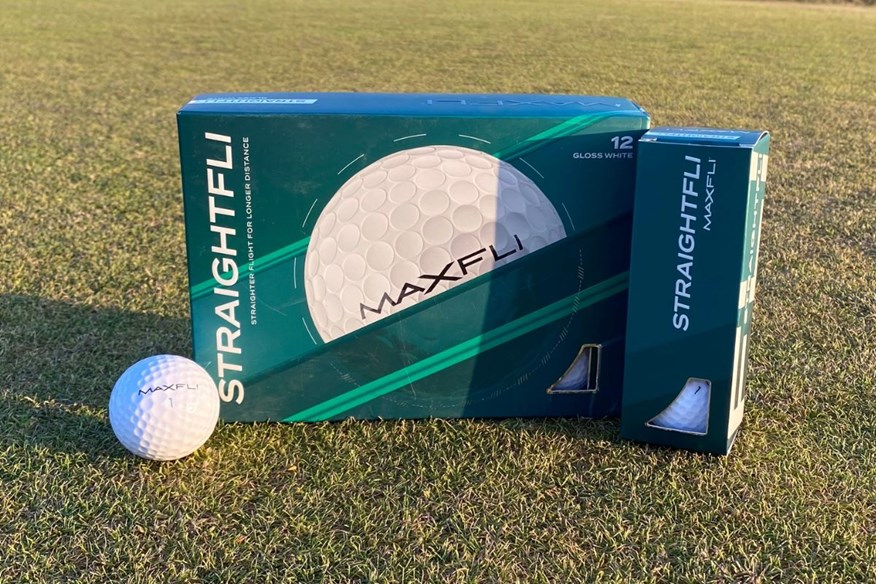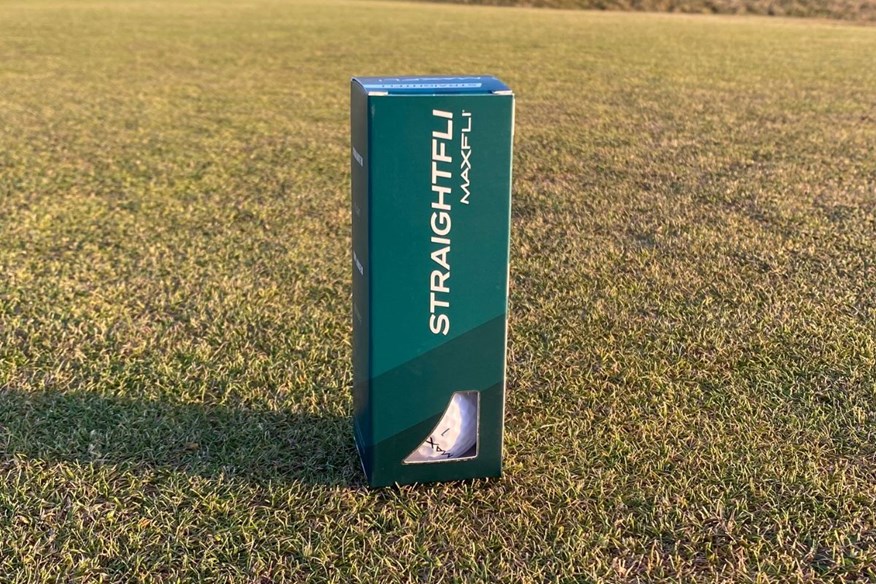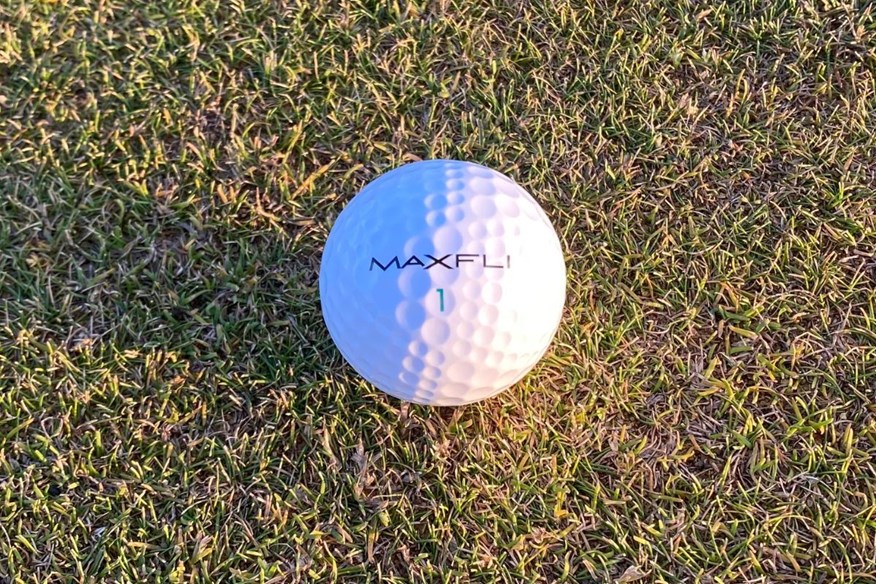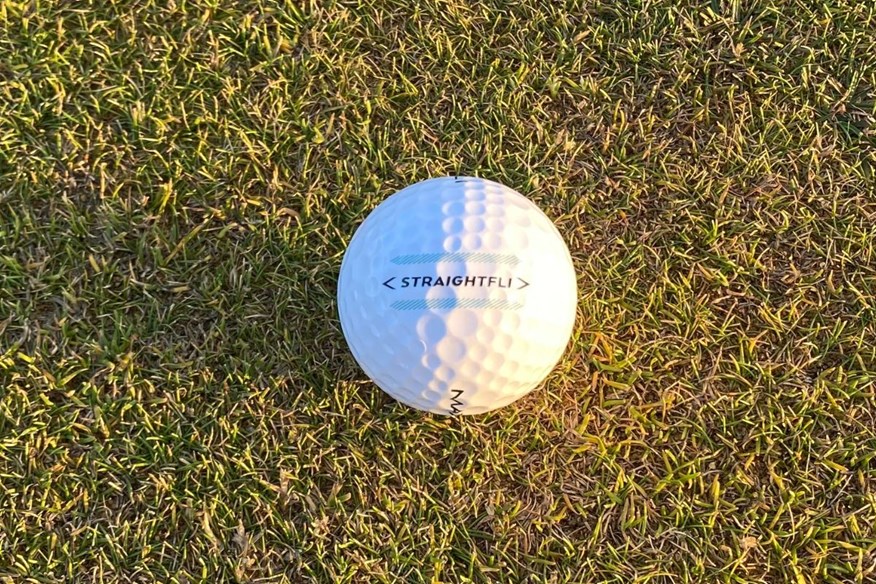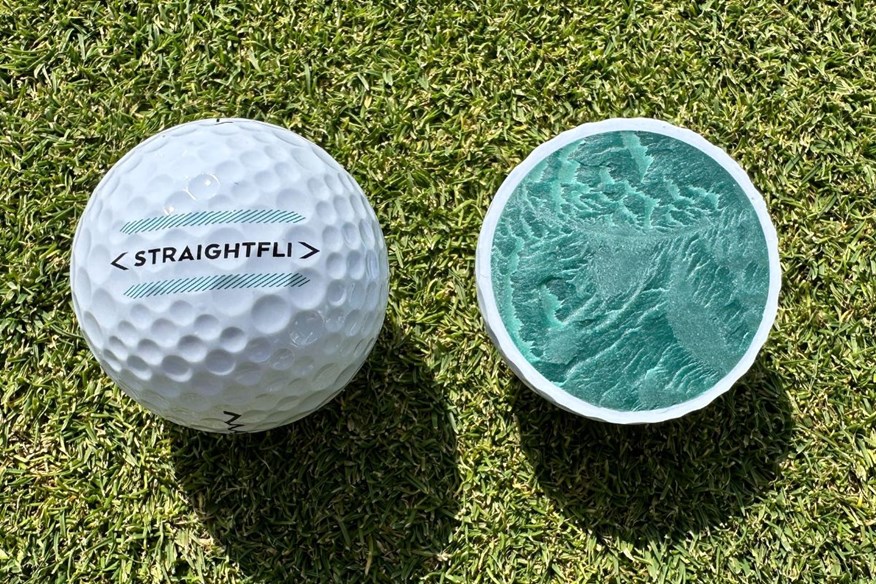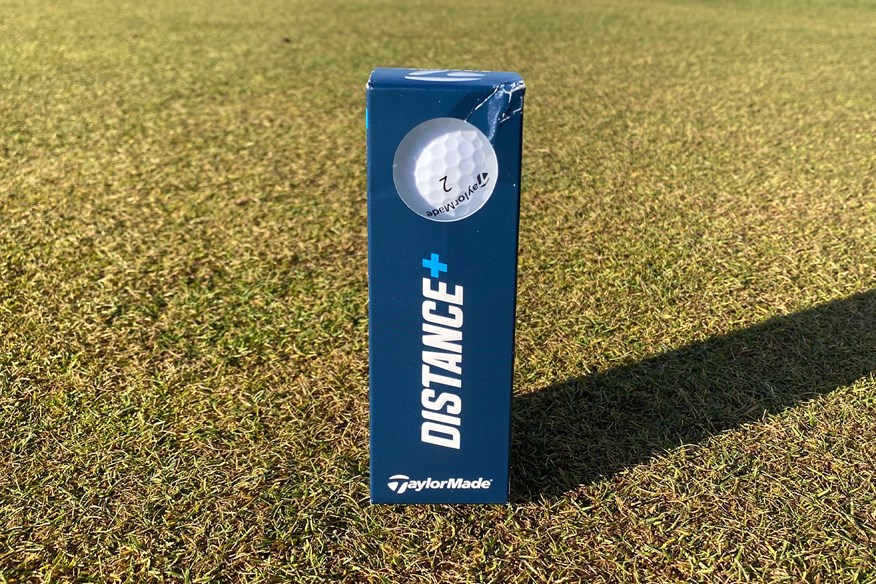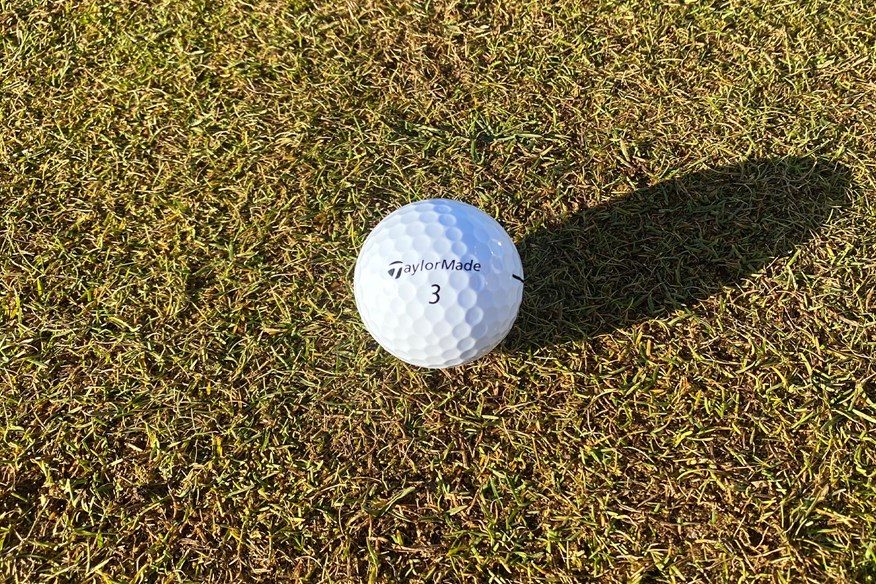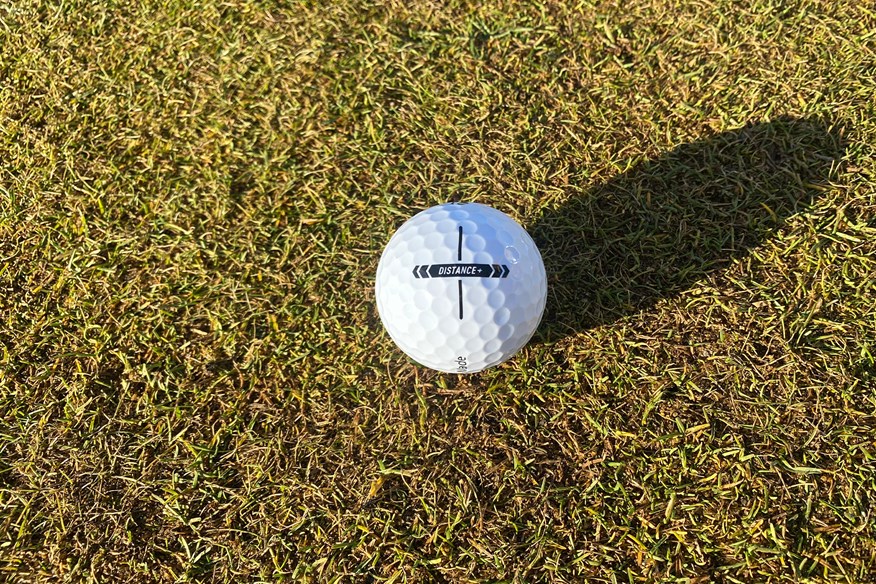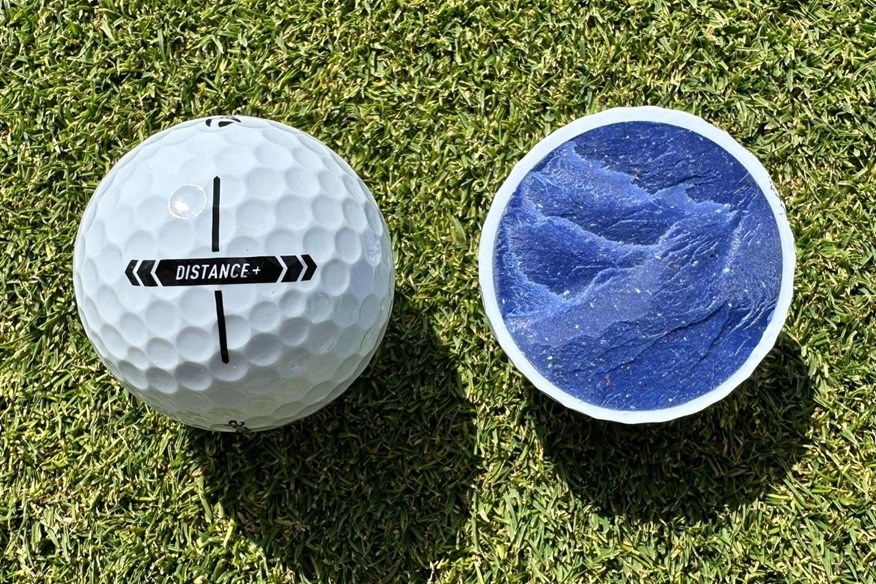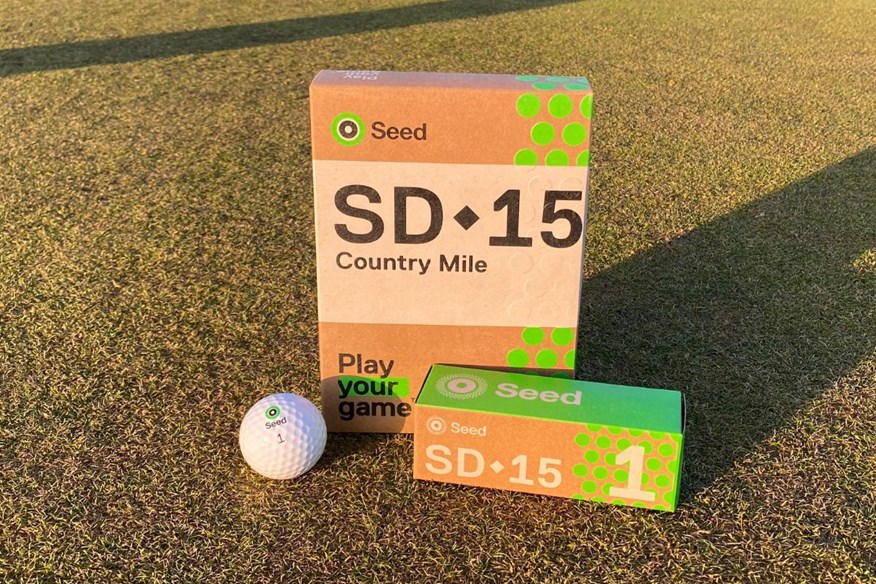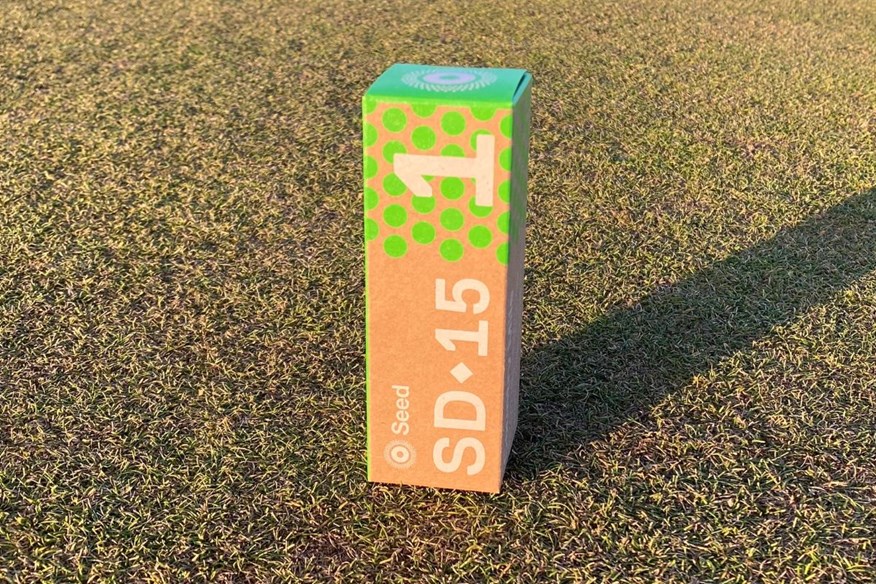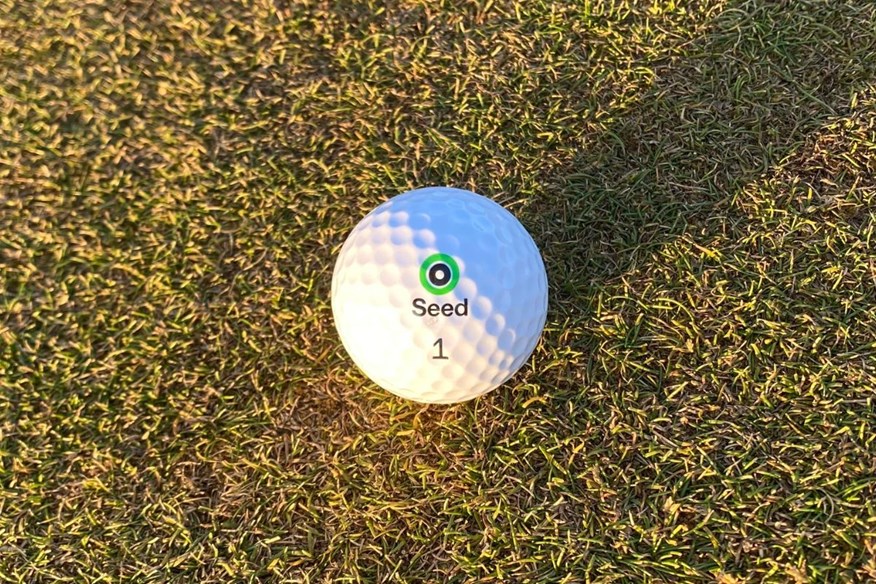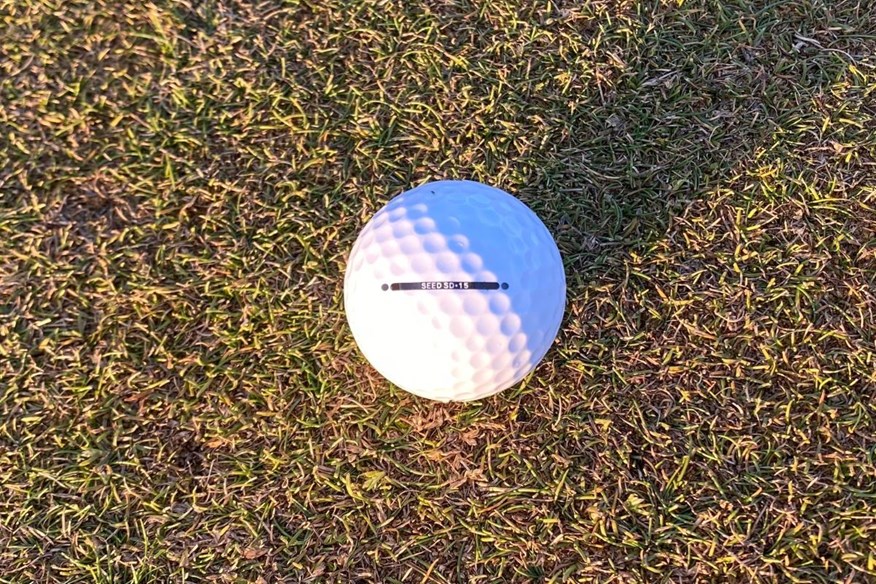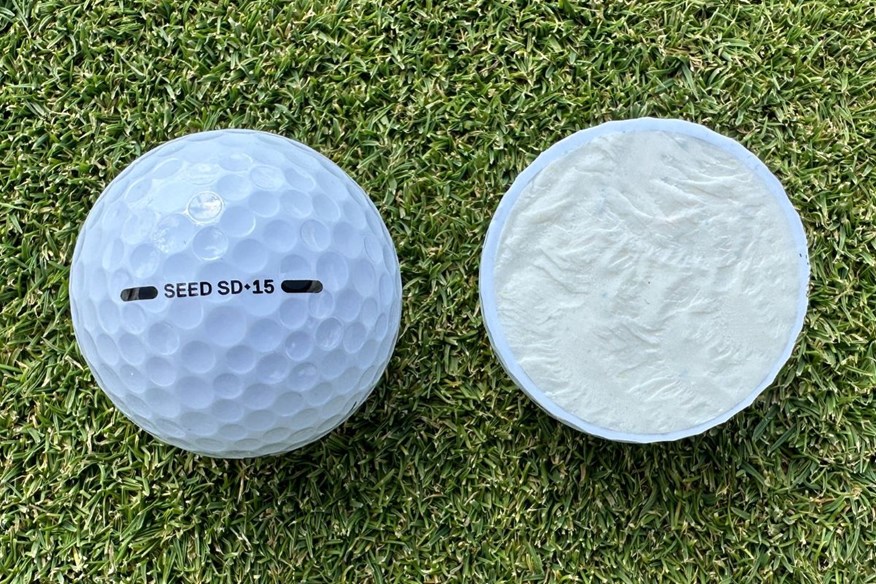Best cheap golf balls 2025: 62 models robot tested to find you the best budget-friendly options
Last updated:

Click here to find out how we conducted our 2025 golf balls test
We’ve tested 62 golf balls on an R&D robot and on the golf course to find out which cheap golf balls are worth purchasing to improve your game and save you money.
Jump to:
Every golfer wants to play with the best golf balls, but not every golfer wants to spend top dollar. Playing golf can be expensive, so where possible, saving money is always welcomed, and one of the best ways is to play with a cheap golf ball that’s not going to hinder your performance.
To help you in your search for the right golf ball, we carried out our biggest ever golf ball robot test – 62 models from 13 manufacturers. As well as testing on the robot, every golf ball has been tested on-course to provide you with a personal verdict. Click the links below to see how we completed this year’s robot test and to find out exactly how we test golf equipment.
- 2025 golf ball robot test: 62 golf balls, 2,232 shots, 50,000 data points… find out what’s No.1 for you
- How we test golf equipment at Today’s Golfer
Whether you’re particular about playing with the best premium golf balls or happy to play with anything round and dimpled, one thing everyone wants is for it to be as cost-effective as possible. Many of the best cheap golf balls are some of the best golf balls for beginners and high-handicappers, the best two-piece golf balls, and the best DTC golf balls.
The best cheap golf balls 2025: At a glance
Best overall: Callaway Warbird Distance+ | View offer
Best three-piece: Vice Tour | View offer
Best high-spin: Kirkland Signature V3.0 | View offer
Best low-spin: TaylorMade Distance+ | View offer
Playing with cheap golf balls doesn’t mean you have to play with a rock! Manufacturers have realized that there’s substantial interest from budget-conscious golfers who want a nice feel, good distance, spin, and durability from their golf balls. It’s difficult for many golfers to differentiate between the best cheap golf balls and the best three-piece golf balls purely based on feel and performance.
Within the best cheap golf balls, there are options to suit those looking to maximize distance and others for golfers who prioritize a soft feel.
Best cheap golf balls 2025
Silver medal for tee to green performance at 93mph and 78mph and short game performance
The Warbird Distance+ is Callaway's cheapest golf ball, but it certainly doesn't perform as though it is. This model scooped up the second-most awards in the two-piece category.
Tee to green performance is incredibly strong at all three swing speeds. The Warbird Distance+ won silver at 93mph and 78mph, and bronze at 114mph. Distance is definitely a strong factor, being the third-best golf ball off the tee in this category.
However, this golf ball isn't purely a distance model (despite it being in its name). For short game performance, the Warbird Distance+ is the second-highest-spinning two-piece model (5,963rpm) and the third-highest-spinning Callaway golf ball.
We're really impressed by the overall performance of the Warbird Distance+. It's firmly put this golf ball on our radar, and with its test results, it should be for you, too!
On-course verdict
I didn't have particularly high hopes for the Callaway Warbird Distance+ given its price, construction, and name, but I'm happy to have been proven wrong.
The Warbird Distance+ doesn't feel the greatest. It's slightly clicky and clunky, which doesn't make the feedback and response very pleasant, but if you can look past that, this is a solid golf ball from tee to green.
Despite being a distance golf ball, the Warbird Distance+ offers much more than solely distance. This golf ball produces high-spin when attacking pins with an iron and wedge - something you don't always expect from a distance golf ball, but it's always appreciated.
Although the Warbird Distance+ offers more than distance, distance is very impressive with this model, thanks to the reduced spin. The carry distance is long, but the ball continues to roll a long way, delivering amazing total distance.
The Warbird Distance+ might not jump out as a must-have golf ball, but you won't be disappointed if you give it a go - I most certainly wasn't.
Pros
- Solid tee to green performance
- Surprisingly strong short-game performance
- Impressive distance
Cons
- Not the nicest feel
| Carry distance (yds) | Driver 114mph - 270.9 | Driver 93mph - 209.2 | Driver 78mph - 161.3 | 7-iron - 157.9 |
| Ball speed (mph) | Driver 114mph - 163 | Driver 93mph - 133.7 | Driver 78mph - 113 | 7-iron - 108.7 |
| Backspin (rpm) | Driver 114mph - 2,683 | Driver 93mph - 2,611 | Driver 78mph - 2,346 | 7-iron - 4,273 | Pitch - 5,963 |
| Launch angle (°) | Driver 114mph - 11.1 | Driver 93mph - 13 | Driver 78mph - 14.2 | 7-iron - 21.6 | Pitch - 30.7 |
| Descent angle (°) | Driver 114mph - 36.8 | Driver 93mph - 32.2 | Driver 78mph - 27.3 | 7-iron - 44.9 | Pitch - 36.1 |
| Peak height (yds) | Driver 114mph - 31.7 | Driver 93mph - 22.5 | Driver 78mph - 15.6 | 7-iron - 29.9 | Pitch - 6.9 |
| Compression (psi) | 92 |
- Extra-large, high-energy core
- Hex aerodynamics
- 332 dimples
- 2-Piece construction
- Available in white and yellow
No.1 3-piece club golfer model
This is one of my most highly anticipated golf balls of the entire test. Ever since I tested the Vice Tour on-course, I've been waiting to see how it would perform in our robot test. I'm very pleasantly surprised.
I'm a fan of the Tour, but I never expected this golf ball would scoop up five awards in the three-piece club golfer category. As well as being the best golf ball for tee to green performance at 114mph, the Tour won the silver medal for tee to green performance at 93mph, off-the-tee performance, and short game performance, plus the bronze medal for tee to green performance at 78mph.
This golf ball is the real deal - and it doesn't have a urethane cover. That's quite possibly a reason as to why it's low-spinning when approaching greens (4,216rpm). However, around the greens, that spin shoots up, and it's the second-highest-spinning model with 5,967rpm (14th overall).
Short game and approach play performance is very clearly solid, but off the tee is where the Tour really gets you excited. At 114mph, this is the longest (271.4yds) and second-fastest (163.3mph) golf ball, at 93mph, it's the longest (208.3yds) and third-fastest (133.4mph), and at 78mph, it's the second-longest (160.8yds) and second-fastest (113.2mph).
There's a ton to like about the Vice Tour, and factoring in the price, as well as its domination, this is the best three-piece club golfer model.
On-course verdict
I would say the Vice Tour is a suitable option for a wide range of golfers because, as a whole, it’s a decent, well-rounded golf ball.
One area where the Vice Tour impresses me is with how well it propels off the face of a long iron. Distance is strong even into the wind, and there’s a more pleasant feedback from this ball than I feel from any of the golf balls in Vice’s Pro range.
I wouldn’t go as far as to say the Vice Tour is a soft-feeling golf ball or a firm-feeling golf ball. I would place it somewhere in the middle, with a medium feel.
Having played with Vice’s Pro Plus, Pro, and Pro Air golf balls, I would say that this golf ball is more responsive than all of those. The feel off the face isn’t as profound as other golf balls I’ve played with, but it definitely isn’t as muted as other Vice golf balls.
This helps to provide more feedback from your shot, which is something I like, but it isn’t something that every golfer wants. The responsiveness of the Vice Tour could be better, but for a golf ball with a Surlyn cover, it’s pretty good.
Whether you have a fast swing speed or a slow swing speed, the Vice Tour should definitely be on your radar.
Read our full Vice Tour golf ball review.
Pros
- Consistent and tight dispersion
- Impressive on-course distance
- Incredible value for money
Cons
- Not much grab on short approach shots
| Carry distance (yds) | Driver 114mph - 271.4 | Driver 93mph - 208.3 | Driver 78mph - 160.8 | 7-iron - 158.1 |
| Ball speed (mph) | Driver 114mph - 163.3 | Driver 93mph - 133.4 | Driver 78mph - 113 | 7-iron - 108.7 |
| Backspin (rpm) | Driver 114mph - 2,769 | Driver 93mph - 2,635 | Driver 78mph - 2,381 | 7-iron - 4,216 | Pitch - 5,967 |
| Launch angle (°) | Driver 114mph - 11.1 | Driver 93mph - 13 | Driver 78mph - 14 | 7-iron - 21.5 | Pitch - 30.6 |
| Descent angle (°) | Driver 114mph - 37.7 | Driver 93mph - 32.2 | Driver 78mph - 27.3 | 7-iron - 44.6 | Pitch - 35.8 |
| Peak height (yds) | Driver 114mph - 32.6 | Driver 93mph - 22.4 | Driver 78mph - 15.5 | 7-iron - 29.6 | Pitch - 6.7 |
| Compression (psi) | 112 |
- Enhanced mid-acid Surlyn cover
- High resilience and low stiffness composition
- Size-optimized High Energy Speed Core (HESC)
- 312 dimples
- 3-Piece construction
- Available in white and grey
Gold medal for short game performance
Kirkland golf balls are known for being high-spinning. The V2.0 was, and so is the V3.0. That's not an issue if you struggle to get the ball in the air or find it difficult to hit and hold greens. It also means the Signature V3.0 is amazing around the greens.
The Signature V3.0 is the gold medal winner for short game performance, in this category, generating 6,050rpm. Of all 62 golf balls tested, it's the seventh-highest-spinning golf ball.
Spin persists throughout the bag, and with the 7-iron shot, the Signature V3.0 is once again the highest-spinning three-piece club golfer model (4,861rpm). It also lands with the steepest descent angle (45°).
You might think the high-spinning nature will hurt how the V3.0 performs off the tee, but is that the case? Definitely not. The V3.0 is the bronze medal winner for off-the-tee performance.
It does generate a lot of spin, but it's also long and fast at all three swing speeds. At the fastest swing speed, it's the third-longest (271yds) and fastest (163.5mph), at the moderate swing speed, it's the third-longest (208yds) and fastest (133.6mph), and at the slower swing speed, it's the third-longest and fourth-fastest (112.8mph).
With the Kirkland Signature V3.0, you are signing yourself up to play with a high-spin golf ball, but if you need spin, it's one of the best models you can play with.
On-course verdict
Over the years, these golf balls have been highly regarded by many golfers and heavily scrutinized by others. Kirkland’s Signature three-piece golf balls are known for delivering high spin, and this is no different with their V3.0, as it ranks among the best high-spin golf balls.
The biggest issue the V3.0 has is that its spin compromises distance, but for some golfers, that won’t be an issue whatsoever.
When I took this ball out on the course, I couldn’t criticize its distance in the long game, but then again, high-spin golf balls suit my game.
I’m a big believer that for the majority of golfers, spin is your friend. You’re guaranteed a golf ball that easily generates spin by playing with the V3.0. Therefore, I believe that more golfers would benefit from playing with this golf ball than not playing with this golf ball.
I’m not normally a fan of soft-feeling golf balls, but I must say that the V3.0 feels good off the club face. I wouldn’t say that the response from this golf ball is particularly strong throughout the bag, but around the greens, there is a pleasant sensation when you clip the ball cleanly – something I think most golfers appreciate.
I think the Kirkland Signature V3.0 is a very strong golf ball. I would never expect to see it played on Tour, but for amateur golfers, it’s definitely one to consider. If you struggle to generate spin or if you just enjoy having a high-spinning golf ball, then it’s a fantastic option.
Read our full Kirkland Signature V3.0 golf ball review.
Pros
- Amazing price per ball considering the quality
- Combines soft feel, long distance, and high spin
- Impressive consistent ball flight
Cons
- Don't expect optimal carry distance
| Carry distance (yds) | Driver 114mph - 271 | Driver 93mph - 208 | Driver 78mph - 160.5 | 7-iron - 154.3 |
| Ball speed (mph) | Driver 114mph - 163.5 | Driver 93mph - 133.6 | Driver 78mph - 112.8 | 7-iron - 108.6 |
| Backspin (rpm) | Driver 114mph - 2,873 | Driver 93mph - 2,734 | Driver 78mph - 2,572 | 7-iron - 4,861 | Pitch - 6,050 |
| Launch angle (°) | Driver 114mph - 11.1 | Driver 93mph - 12.7 | Driver 78mph - 13.9 | 7-iron - 20.7 | Pitch - 30 |
| Descent angle (°) | Driver 114mph - 38.3 | Driver 93mph - 32.3 | Driver 78mph - 27.7 | 7-iron - 45 | Pitch - 35.1 |
| Peak height (yds) | Driver 114mph - 33.2 | Driver 93mph - 22.3 | Driver 78mph - 15.6 | 7-iron - 29.1 | Pitch - 6.5 |
| Compression (psi) | 107 |
- Increased core size
- Mantle with new proprietary cover
- Proprietary TPU with improved scuff resistance and impact endurance
- Modified dimple depth for optimized flight height
- 338 dimples
- 3-Piece construction
- Available in white only
Bronze medal for short game performance
Best Mizuno cheap golf ball
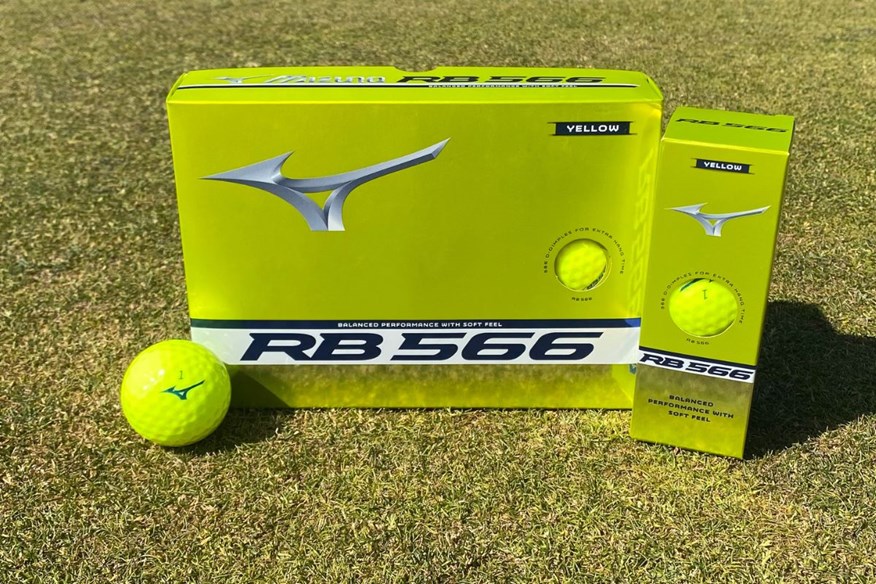

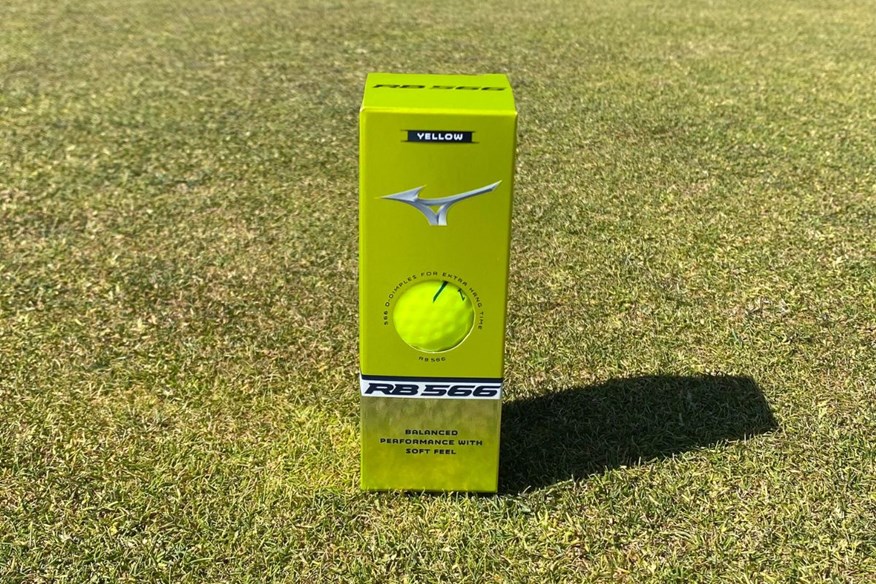
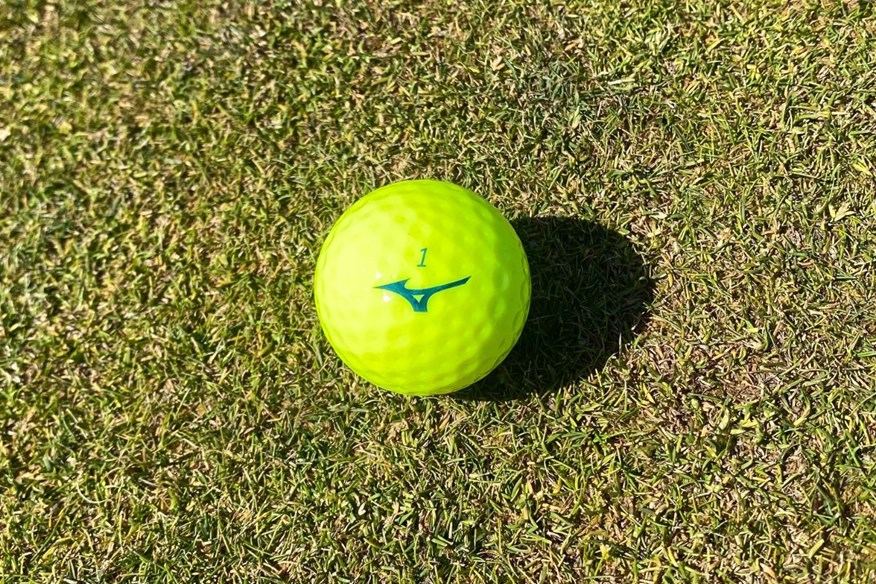
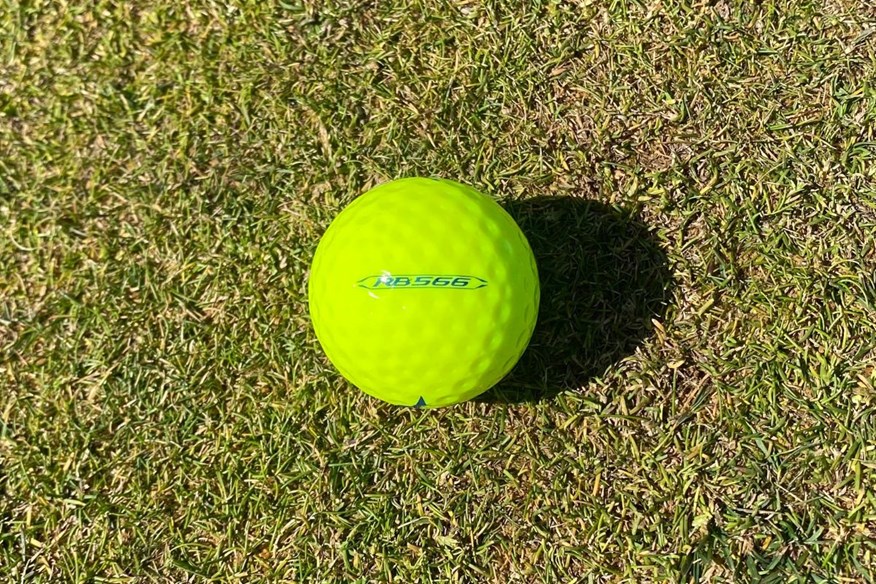
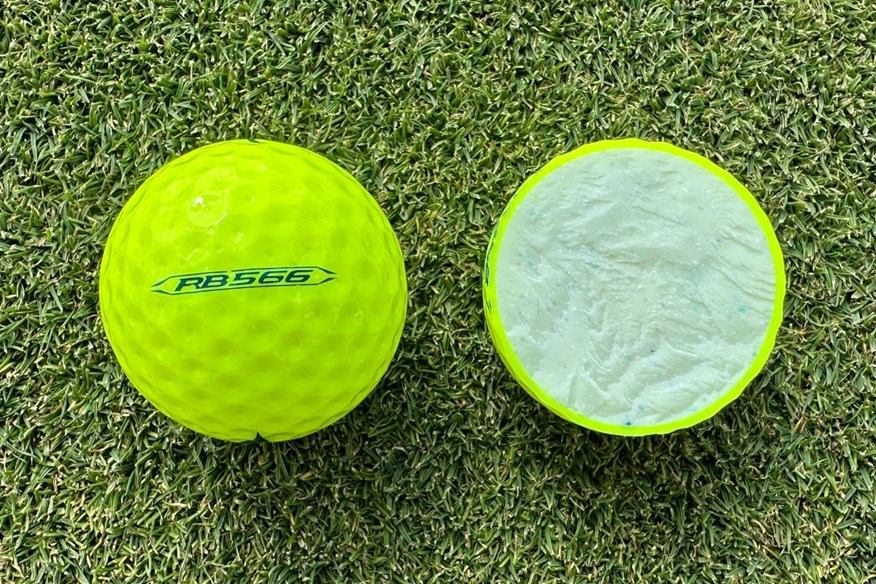
Probably not. However, it is the bronze medal winner for short game performance (5,960rpm). Although the dimple technology isn't specifically designed to generate spin, the RB 566 is the highest-spinning golf ball in approach play (4,947), and it lands with the steepest descent angle (45.3°).
Off the tee is where the RB 566 should make the most impact by reducing spin. It's below the test average for backspin at 93mph and 78mph, and bang on the average at 114mph. This makes it a very average performer for off-the-tee performance.
It might not be what Mizuno are going for, but I'd recommend the RB 566 for anyone looking for a high-spin golf ball. It's definitely a unique golf ball, and for that reason, it is interesting. However, the RB 566 should only tempt you if you're looking to add spin to your game.
On-course verdict
There's something very exciting about a unique golf ball, and so that's exactly how I felt when testing the Mizuno RB 566 with its 566 dimples.
I didn't really know what to expect from this golf ball, but I definitely wasn't expecting it to confuse me as much as it did. I had a lot of enjoyment playing with the RB 566 because I was able to throw the ball at the pin and watch it stop. I wasn't expecting it to spin as much as it did.
This golf ball was high-spinning for me throughout the bag. Off the tee, I was struggling to stop the ball from spinning. I definitely had contrasting emotions off the tee to approaching the green.
The feel is soft, and it's not the most responsive, which I'm not massively keen on.
Overall, I feel as though this is a high-spinning golf ball, almost to its detriment because it balloons off the tee. However, a different golfer might think otherwise, especially if you have a slower swing speed.
Pros
- Great short-game spin and control
- Good value
- Solid performance from tee to green
Cons
- Struggled to reduce spin off the tee on the course
| Carry distance (yds) | Driver 114mph - 268.6 | Driver 93mph - 207.9 | Driver 78mph - 160.2 | 7-iron - 154.8 |
| Ball speed (mph) | Driver 114mph - 161.9 | Driver 93mph - 133.3 | Driver 78mph - 112.6 | 7-iron - 109.1 |
| Backspin (rpm) | Driver 114mph - 2,719 | Driver 93mph - 2,553 | Driver 78mph - 2,381 | 7-iron - 4,947 | Pitch - 5,960 |
| Launch angle (°) | Driver 114mph - 11.1 | Driver 93mph - 13 | Driver 78mph - 14.1 | 7-iron - 20.7 | Pitch - 30.6 |
| Descent angle (°) | Driver 114mph - 36.9 | Driver 93mph - 31.6 | Driver 78mph - 27.2 | 7-iron - 45.3 | Pitch - 36 |
| Peak height (yds) | Driver 114mph - 31.5 | Driver 93mph - 21.9 | Driver 78mph - 15.4 | 7-iron - 29.6 | Pitch - 7 |
| Compression (psi) | 92 |
- Large soft compression core
- Micro dimple design
- Ionomer cover
- 566 dimples
- 2-Piece construction
- Available in white, yellow, and orange
Titleist's best 2-piece golf ball for off-the-tee performance
Best distance cheap golf ball
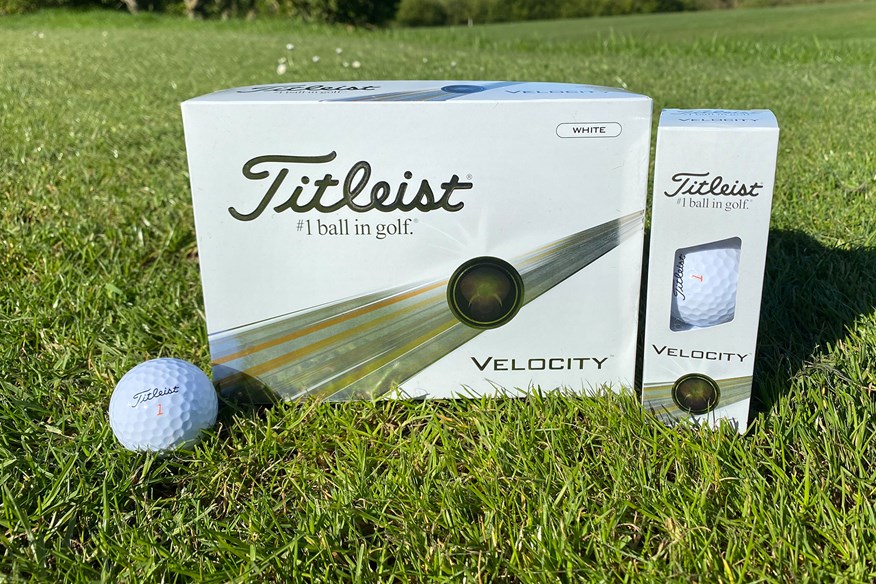


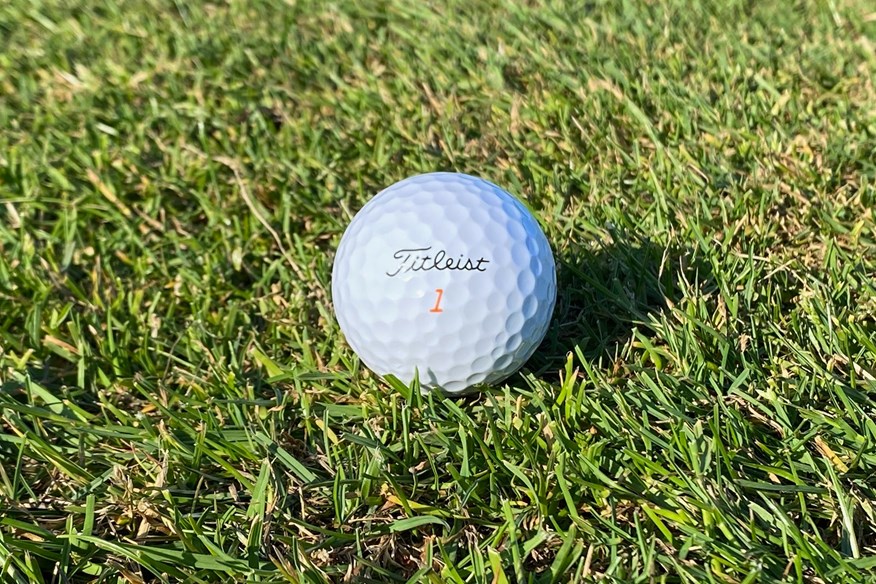
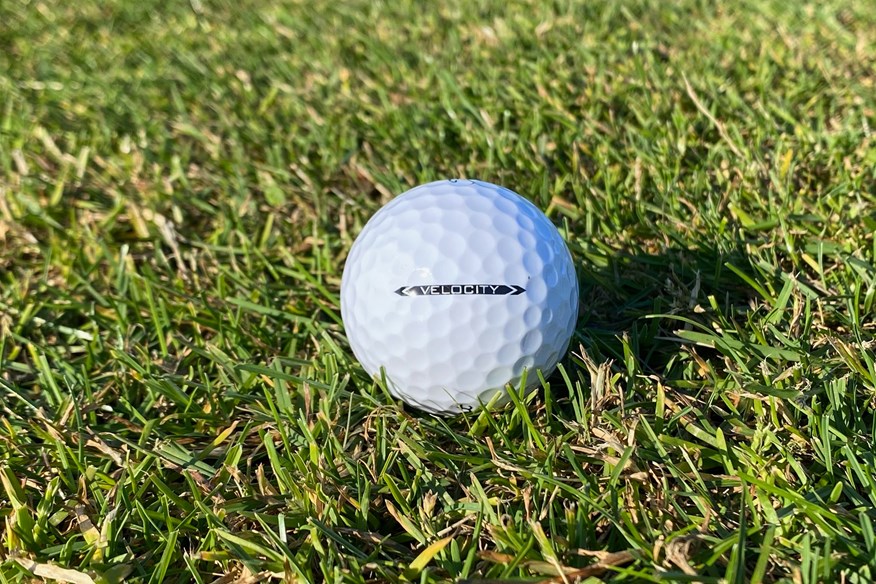
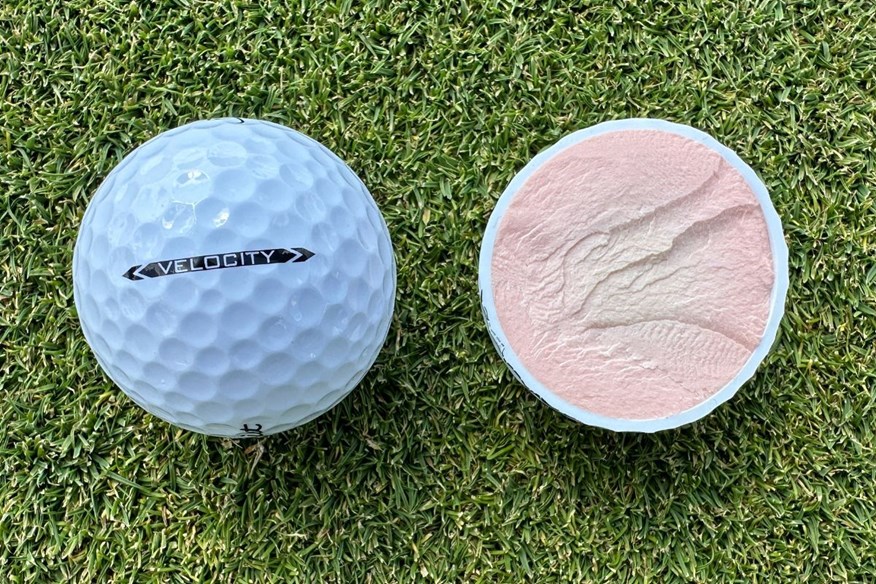
Across all three swing speeds, the Velocity is the fourth-best two-piece golf ball for overall performance off the tee. We fully expected the Velocity to perform well off the tee because it's a distance golf ball, but if we're being honest, we didn't expect it to outperform the four-piece Pro V1x.
The velocity delivered its best performance at 114mph. At the quickest swing speed we tested, the Velocity produced 271.5 carry yards and 163.2mph ball speed.
In approach play, the Velocity is the lowest-spinning golf ball (3,081rpm) and longest (160.6yds) out of all 62 models we tested. That's potentially expected given it's a distance golf ball.
However, the Velocity's short game performance is much better than we expected. This golf ball is the fifth-highest-spinning two-piece model, with 5,789rpm.
The Titleist Velocity delivers competitive distance and overall performance for all golfers. You're guaranteed distance, but you're also getting a golf ball that can perform around the greens.
On-course verdict
I'm quite the fan of Velocity. In the right hands, this can be a very strong performing golf ball. However, in the wrong hands, it can majorly hinder your game.
For my game, off the tee, Velocity performs very closely to the Pro V1x, but as I approach the green, distance begins to outweigh spin, which isn't something I require.
If you're a golfer who's looking to reduce spin and gain distance, Velocity has to be on your radar, especially at its price.
This is a two-piece golf ball, but I honestly think it's hard to tell. If I weren't able to distinguish this golf ball in Titleist's line-up by its orange numbers, I think you could trick me into thinking it's the Pro V1x based on its long game performance. Take it to the short-game area, and it's very easy to see this is a distance golf ball.
Pros
- Very competitive distance
- Great value
- Good feel and feedback
Cons
- Low short-game spin and control
| Carry distance (yds) | Driver 114mph - 271.5 | Driver 93mph - 208.9 | Driver 78mph - 160.6 | 7-iron - 160.6 |
| Ball speed (mph) | Driver 114mph - 163.2 | Driver 93mph - 133.5 | Driver 78mph - 112.9 | 7-iron - 108.7 |
| Backspin (rpm) | Driver 114mph - 2,677 | Driver 93mph - 2,467 | Driver 78mph - 2,261 | 7-iron - 3,801 | Pitch - 5,789 |
| Launch angle (°) | Driver 114mph - 11.1 | Driver 93mph - 13.2 | Driver 78mph - 14.2 | 7-iron - 21.9 | Pitch - 31.2 |
| Descent angle (°) | Driver 114mph - 36.9 | Driver 93mph - 31.5 | Driver 78mph - 26.8 | 7-iron - 44 | Pitch - 36.7 |
| Peak height (yds) | Driver 114mph - 31.8 | Driver 93mph - 22.2 | Driver 78mph - 15.3 | 7-iron - 29.6 | Pitch - 7.1 |
| Compression (psi) | 101 |
- High-speed LSX core
- Fast NAZ+ cover
- Spherically-tiled octahedral dimple pattern
- 350 dimples
- 2-Piece construction
- Available in white, green, and orange
Silver medal for approach play performance
The Srixon Q-Star is yet another Srixon golf ball that performs noticeably well in approach play performance.
This is the fifth Srixon golf ball to pick up an award for approach play performance - the silver medal. Not only is the Q-Star the second-best two-piece golf ball in this area, but it's also the 16th best out of all 62 tested.
A big reason for the Q-Star performing so well in approach play is its carry distance consistency, ranking 13th overall. There is certainly a pattern between Srixon golf balls and delivering a consistent distance.
In short game performance, the Q-Star is the seventh-highest-spinning two-piece model, sitting just below the test average with 5,674rpm.
Off-the-tee performance isn't overly strong from the Q-Star, finishing towards the middle of the pack at all three driver swing speeds.
The Q-Star is the best two-piece Srixon golf ball, and if you're looking for a ball to trust when attacking pins, you can't go wrong with this model.
On-course verdict
The Srixon Q-Star is a hugely popular golf ball all across the globe because it's a very reasonable price and it delivers repeatable performance.
With the Q-Star, golfers know what to expect, and while it might not be Tour-level performance, for the vast majority of amateur golfers, it's good enough to allow them to enjoy 18 holes.
I'm not a massive fan of the Q-Star, but it doesn't suit my game. Also, I find the feel and sound to be quite clicky.
Pros
- Strong approach play performance
- Admirable short game spin and control
- Popular model among amateurs
Cons
- Not a massive fan of the sound and feel
| Carry distance (yds) | Driver 114mph - 266.4 | Driver 93mph - 204.5 | Driver 78mph - 159.9 | 7-iron - 155.8 |
| Ball speed (mph) | Driver 114mph - 160.8 | Driver 93mph - 132.1 | Driver 78mph - 112.4 | 7-iron - 108 |
| Backspin (rpm) | Driver 114mph - 2,685 | Driver 93mph - 2,649 | Driver 78mph - 2,371 | 7-iron - 4,387 | Pitch - 5,674 |
| Launch angle (°) | Driver 114mph - 11 | Driver 93mph - 12.7 | Driver 78mph - 14.2 | 7-iron - 21.5 | Pitch - 31.4 |
| Descent angle (°) | Driver 114mph - 36.5 | Driver 93mph - 31.4 | Driver 78mph - 27.3 | 7-iron - 44.8 | Pitch - 37.1 |
| Peak height (yds) | Driver 114mph - 30.9 | Driver 93mph - 21.3 | Driver 78mph - 15.5 | 7-iron - 29.5 | Pitch - 7.3 |
| Compression (psi) | 68 |
- FastLayer core
- Spin Skin with SeRM
- Speed dimple pattern
- 338 dimples
- 2-Piece construction
- Available in white and yellow
Silver medal for off-the-tee performance
The Maxfli StraightFli is the second-best golf ball off the tee in the two-piece golf ball category.
At 78mph, this is the longest golf ball (161.3yds) and second-fastest (113.1mph). At the quickest swing speed, the StraightFli is sixth-longest (270yds) and sixth-fastest (162.6mph). But, 93mph is where this model performs best, being the longest (210yds) and fastest (134.1mph). For its performance at this swing speed, the StraightFli won the bronze medal for tee to green performance.
The StraightFli is a very solid golf ball in approach play. Backspin (4,530rpm) is fourth-highest, descent angle (44.9°) is fourth-steepest, and carry distance (158yds) is eighth-longest.
The only area where the StraightFli doesn't perform well is in short game performance. The StraightFli is one of only two golf balls to spin below 5,200rpm, and it's the second-lowest spinning golf ball with 3,742rpm.
Greenside performance obviously isn't ideal, but off the tee and from the fairway, the StraightFli is definitely a two-piece golf ball to consider.
On course verdict
I've not had much playing time with the Maxfli Straightfli, but on the couple of occasions I have played with this golf ball, I've not really noticed it fly much straighter than other golf balls.
However, what I have noticed is that its distance is competitive. That stacks up with how it performed in our robot test.
The distance comes from this golf ball's low-spinning nature. For some golfers, that will make this model appealing, but for me, it's a reason not to put it in play.
I'm not overly keen on the feel and sound of the StraightFli. It feels slightly dull, and the sound matched that.
Pros
- Competitive distance
- Good tee-to-green performance
- Amazing value
Cons
- Low greenside spin and control
| Carry distance (yds) | Driver 114mph - 270 | Driver 93mph - 210 | Driver 78mph - 161.3 | 7-iron - 158 |
| Ball speed (mph) | Driver 114mph - 162.6 | Driver 93mph - 134.1 | Driver 78mph - 113.1 | 7-iron - 109.5 |
| Backspin (rpm) | Driver 114mph - 2,764 | Driver 93mph - 2,575 | Driver 78mph - 2,254 | 7-iron - 4,530 | Pitch - 3,742 |
| Launch angle (°) | Driver 114mph - 11.1 | Driver 93mph - 13 | Driver 78mph - 14.3 | 7-iron - 21 | Pitch - 36.5 |
| Descent angle (°) | Driver 114mph - 37.5 | Driver 93mph - 32 | Driver 78mph - 27 | 7-iron - 44.9 | Pitch - 42.8 |
| Peak height (yds) | Driver 114mph - 32.3 | Driver 93mph - 22.5 | Driver 78mph - 15.5 | 7-iron - 29.8 | Pitch - 9.1 |
| Compression (psi) | 102 |
- 20 Percent straighter flight compared to previous generation
- Cube-octahedron dimple design
- Soft Ionomer cover
- 374 dimples
- 2-Piece construction
- Available in white, yellow, green, and orange
- An alternative model is Graffiti
Bronze medal for tee to green performance at 78mph
The TaylorMade Distance+ is towards the top of the leaderboard at all three driver swing speeds, which is exactly where you'd expect it to be. However, we didn't expect it to perform as well in approach play performance as it did.
The Distance+ is the bronze medal winner for tee to green performance at 78mph, and while a factor of that is its off-the-tee performance (161yds carry distance and 113mph ball speed), a greater factor is its approach play performance.
Generating 4,596rpm makes this the third-highest-spinning golf ball, and with a descent angle of 45.1°, it's the third-steepest landing two-piece golf ball. Definitely not what we expected of a distance model.
Sadly, spin does drop around the greens. For short game performance, the Distance+ is the lowest-spinning golf ball of the entire test (3,685rpm).
However, given how strong the Distance+ performs from tee to green, you might not miss many greens. As long as you're able to play with more roll out on the greens, the Distance+ is a great golf ball at an amazing price.
On-course verdict
I really like the TaylorMade Distance+, I think it's a much better golf ball than many people will imagine.
One area that really impresses me on course is this model's short game performance. I know it didn't perform well in our robot test, but on the golf course, I've never had an issue stopping this golf ball quickly, playing around the greens.
This is a really solid golf ball from tee to green, and one I recommend to anyone looking for a cheaper golf ball that performs everywhere on the golf course.
Pros
- Solid tee-to-green performance
- Strong approach play performance
- Impressive performer on-course
Cons
- Low short game performance backspin
| Carry distance (yds) | Driver 114mph - 270.9 | Driver 93mph - 208.3 | Driver 78mph - 161 | 7-iron - 155.7 |
| Ball speed (mph) | Driver 114mph - 162.9 | Driver 93mph - 133.4 | Driver 78mph - 113 | 7-iron - 108..5 |
| Backspin (rpm) | Driver 114mph - 2,704 | Driver 93mph - 2,476 | Driver 78mph - 2,314 | 7-iron - 4,596 | Pitch - 3,685 |
| Launch angle (°) | Driver 114mph - 11.1 | Driver 93mph - 13 | Driver 78mph - 14.1 | 7-iron - 21.2 | Pitch - 36.5 |
| Descent angle (°) | Driver 114mph - 37.1 | Driver 93mph - 31.2 | Driver 78mph - 27 | 7-iron - 45.1 | Pitch - 42.7 |
| Peak height (yds) | Driver 114mph - 32 | Driver 93mph - 21.8 | Driver 78mph - 15.4 | 7-iron - 29.6 | Pitch - 78.9 |
| Compression (psi) | 95 |
- React speed core
- Ultra-soft feel
- Aerodynamic dimple pattern
- Plus alignment aid
- 342 dimples
- 2-Piece construction
- Available in white and yellow
Seed's cheapest golf ball
The Seed SD-15's biggest positive is definitely its price. This is a very average golf ball up against the other 61 in the test, but in the two-piece category, it fares well.
This golf ball isn't taking home any awards, but it does perform admirably in approach play and short game performance. Approach play performance is where the SD-15 achieved its highest ranking of fifth in this category. Short game performance is also strong, up against two-piece models, with the SD-15 finishing sixth overall.
Off the tee, it's sadly a different story. The SD-15 is towards the bottom of the rankings. However, it is better off the tee than the three-piece SD-05.
Despite being the cheapest Seed golf ball, the SD-15 definitely isn't the worst - that goes to the SD-05. For the price, the SD-15 is well worth your consideration, especially if performance off the tee isn't what your golf game is lacking.
On-course verdict
My favorite aspect of the Seed SD-15 is its feel. This isn't a soft golf ball, and that might not appeal to everyone, but it definitely does to me. The slightly firmer-than-soft feel means the SD-15 provides strong feedback.
From tee to green, the SD-15 doesn't blow me away with its performance, but it's respectable enough not to make me completely dismiss it.
I'm not interested in distance, which I think makes the SD-15 more appealing to me because its strongest area on the course is around the green.
Pros
- Strong feedback due to firmer feel
- Good greenside spin and control
- Admirable approach play performance
Cons
- Not the longest golf ball
| Carry distance (yds) | Driver 114mph - 263.5 | Driver 93mph - 204 | Driver 78mph - 158.9 | 7-iron - 157.6 |
| Ball speed (mph) | Driver 114mph - 159.6 | Driver 93mph - 131.7 | Driver 78mph - 112 | 7-iron - 108.3 |
| Backspin (rpm) | Driver 114mph - 2,612 | Driver 93mph - 2,482 | Driver 78mph - 2,233 | 7-iron - 4,170 | Pitch - 5,667 |
| Launch angle (°) | Driver 114mph - 11 | Driver 93mph - 13 | Driver 78mph - 14.4 | 7-iron - 21.7 | Pitch - 31.4 |
| Descent angle (°) | Driver 114mph - 35.4 | Driver 93mph - 30.8 | Driver 78mph - 26.8 | 7-iron - 44.6 | Pitch - 37.1 |
| Peak height (yds) | Driver 114mph - 29.5 | Driver 93mph - 21.1 | Driver 78mph - 15.2 | 7-iron - 29.6 | Pitch - 7.3 |
| Compression (psi) | 64 |
- Thinner Surlyn cover
- Low compression core
- 332 dimples
- 2-Piece construction
- Available in white, yellow, green, and red
- Alternative models include The Jack and SYNCR
Titleist's worst two-piece golf ball
Softest Titleist cheap golf ball
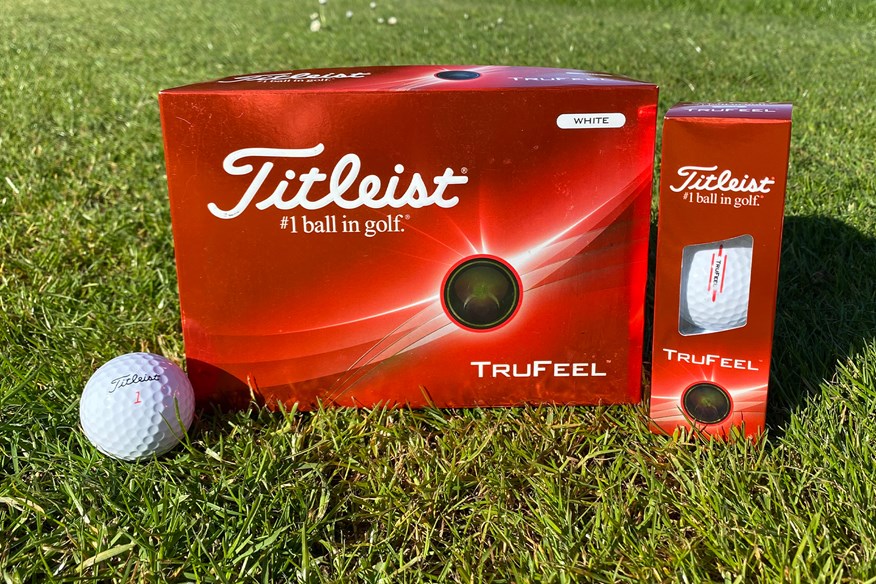

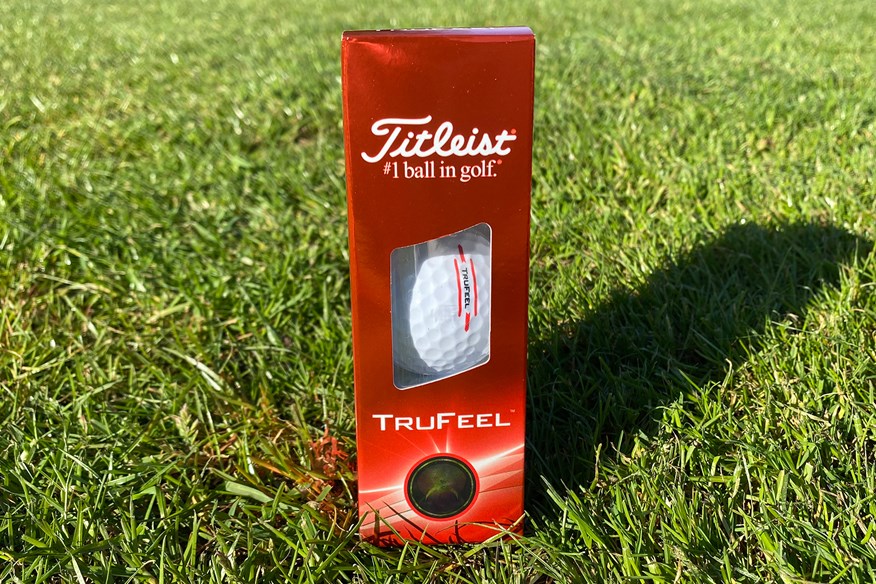
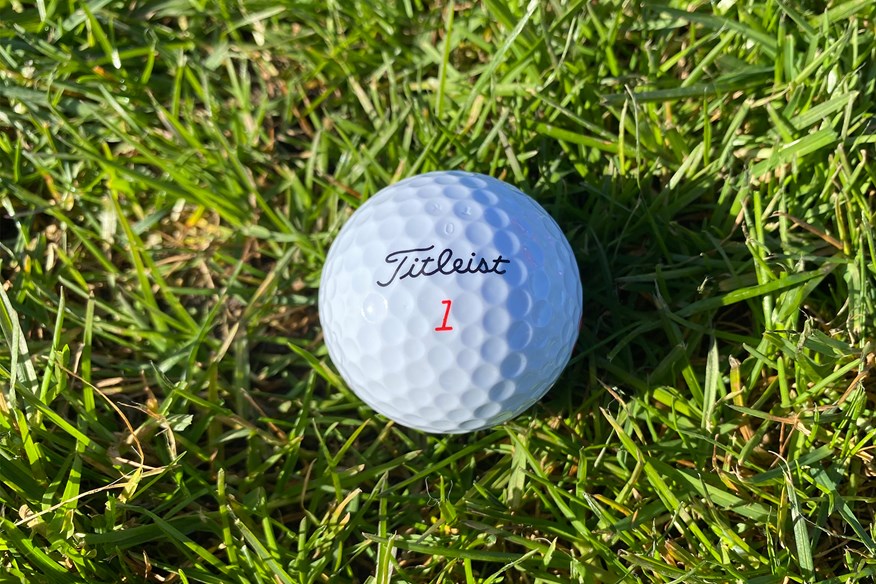
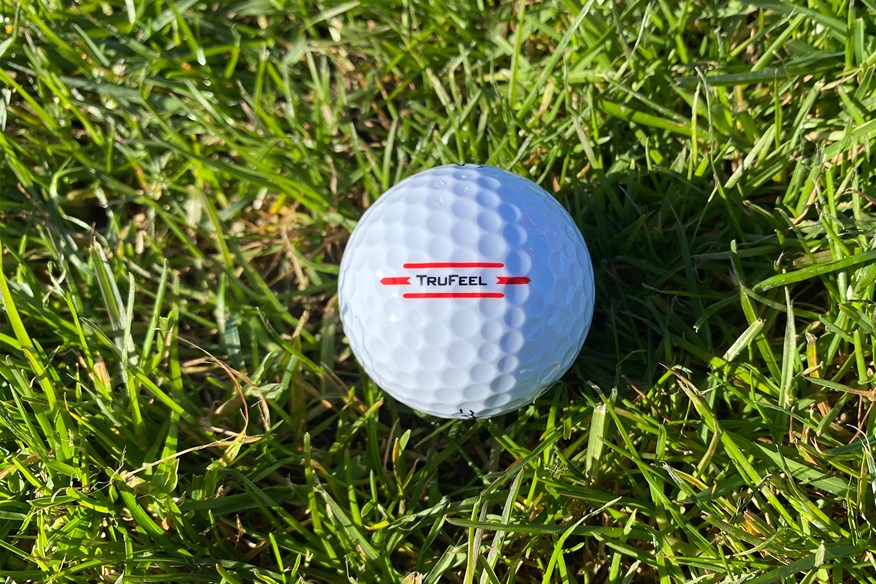
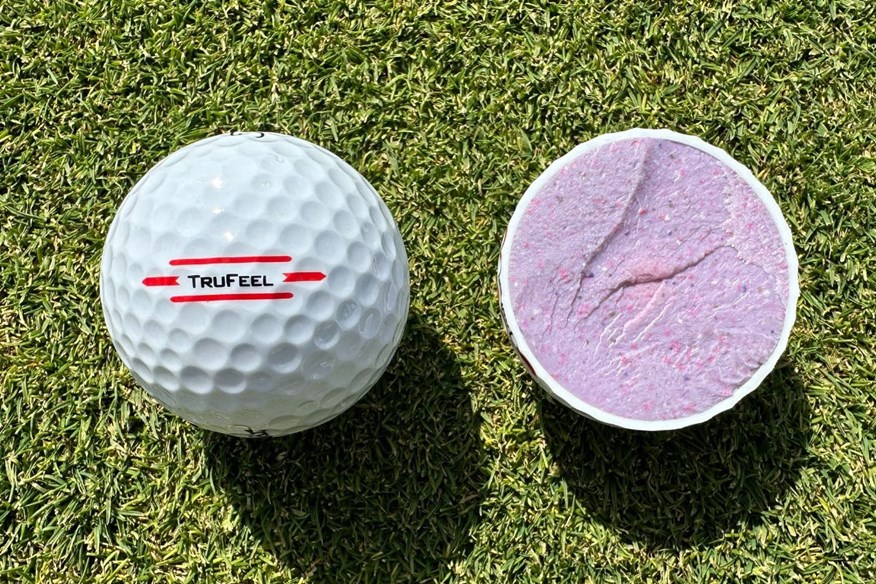
It speaks volumes that Titleist's worst two-piece golf ball is the 10th best two-piece model from our 2025 robot test.
Just because the TruFeel isn't as good a performer as the Tour Soft or Velocity based on the robot testing, doesn't mean it shouldn't be put in play for certain golfers.
The TruFeel has a much lower compression rating (68) than the other two Titleist two-piece models, and that will make it easier to compress for slower swing speed golfers.
If you're not in the market for a lower compression golf ball, I can't see a reason to opt for this golf ball over the Velocity or Tour Soft, if you're looking for a 2-piece Titleist model.
The performance of the TruFeel isn't a million miles off the Tour Soft or Velocity, but it is shorter and slower off the tee at all three driver swing speeds, slower and lower-spinning in approach play performance, and lower-spinning in short game performance.
This is said to be Titleist's softest golf ball, but I don't think soft feel is enough to draw you away from either of Titleist's other two-piece golf balls. Unless feel is everything.
On-course verdict
I'm not one to play with the Titleist TruFeel because it does very little for me. In my opinion, the feel is unpleasantly soft and dull, and the performance doesn't match the levels of the Velocity or Tour Soft.
My on-course experience is very similar to our robot test verdict. I can see why the TruFeel will have its fans; it's a cheap Titleist golf ball.
However, personally, I think spending the extra money on a different golf ball is worthwhile, or switching to the Velocity if you want distance, or Tour Soft if you want spin.
Pros
- Soft feeling will appeal to most golfers
- Not far behind the Tour Soft or Velocity with its performance
- Reasonably priced
Cons
- Difficult to recommend ahead of Tour Soft or Velocity
| Carry distance (yds) | Driver 114mph - 269.1 | Driver 93mph - 207.6 | Driver 78mph - 160.1 | 7-iron - 158.1 |
| Ball speed (mph) | Driver 114mph - 161.9 | Driver 93mph - 133 | Driver 78mph - 112.6 | 7-iron - 108.4 |
| Backspin (rpm) | Driver 114mph - 2,605 | Driver 93mph - 2,506 | Driver 78mph - 2,218 | 7-iron - 4,125 | Pitch - 5,553 |
| Launch angle (°) | Driver 114mph - 11.1 | Driver 93mph - 13.1 | Driver 78mph - 14.4 | 7-iron - 21.8 | Pitch - 31.8 |
| Descent angle (°) | Driver 114mph - 36.1 | Driver 93mph - 31.5 | Driver 78mph - 26.8 | 7-iron - 44.6 | Pitch - 37.7 |
| Peak height (yds) | Driver 114mph - 30.8 | Driver 93mph - 21.9 | Driver 78mph - 15.3 | 7-iron - 29.7 | Pitch - 7.6 |
| Compression (psi) | 68 |
- Reformulated TruTouch core
- Softer 3.0 TruFlex cover
- Spherically-tiled tetrahedral dimple design
- 376 dimples
- 2-Piece construction
- Available in white and yellow
Best cheap golf balls 2025: Robot test data
| Golf ball | Callaway Warbird Distance+ | Vice Tour | Kirkland Signature V3.0 | Mizuno RB 566 | Titleist Velocity | Srixon Q-Star | Maxfli StraightFli | TaylorMade Distance+ | Seed SD-15 | Titleist TruFeel |
| Compression | 92 | 112.0 | 107.0 | 92 | 101 | 68 | 102 | 95 | 64 | 68 |
| 114mph Driver Ball Speed (mph) | 163 | 163.3 | 163.5 | 161.9 | 163.2 | 160.8 | 162.6 | 162.9 | 159.6 | 161.9 |
| 114mph Driver Launch Angle (°) | 11.1 | 11.1 | 11.1 | 11.1 | 11.1 | 11.2 | 11.1 | 11.1 | 11 | 11.1 |
| 114mph Driver Backspin (rpm) | 2683 | 2769 | 2873 | 2719 | 2677 | 2685 | 2764 | 2704 | 2612 | 2605 |
| 114mph Driver Carry Distance (yds) | 270.9 | 271.4 | 271.0 | 268.6 | 271.5 | 266.4 | 270 | 270.9 | 263.5 | 269.1 |
| 114mph Driver Height (yds) | 31.7 | 32.6 | 33.2 | 31.5 | 31.8 | 30.9 | 32.3 | 32 | 29.5 | 30.8 |
| 114mph Driver Descent Angle (°) | 36.8 | 37.7 | 38.3 | 36.9 | 36.9 | 36.5 | 37.5 | 37.1 | 35.4 | 36.1 |
| 93mph Driver Ball Speed (mph) | 133.7 | 133.4 | 133.6 | 133.3 | 133.5 | 132.1 | 134.1 | 133.4 | 131.7 | 133 |
| 93mph Driver Launch Angle (°) | 13 | 13.0 | 12.7 | 13 | 13.2 | 12.7 | 13 | 13 | 13 | 13.1 |
| 93mph Driver Backspin (rpm) | 2611 | 2635 | 2734 | 2553 | 2467 | 2649 | 2575 | 2476 | 2482 | 2506 |
| 93mph Driver Carry Distance (yds) | 209.2 | 208.3 | 208.0 | 207.9 | 208.9 | 204.5 | 210 | 208.3 | 204 | 207.6 |
| 93mph Driver Height (yds) | 22.5 | 22.4 | 22.3 | 21.9 | 22.2 | 21.3 | 22.5 | 21.8 | 21.1 | 21.9 |
| 93mph Driver Descent Angle (°) | 32.2 | 32.2 | 32.3 | 31.6 | 31.5 | 31.4 | 32 | 31.2 | 30.8 | 31.5 |
| 78mph Driver Ball Speed (mph) | 113 | 113.0 | 112.8 | 112.6 | 112.9 | 112.4 | 113.1 | 113 | 112 | 112.6 |
| 78mph Driver Launch Angle (°) | 14.2 | 14.0 | 13.9 | 14.1 | 14.2 | 14.2 | 14.3 | 14.1 | 14.4 | 14.4 |
| 78mph Driver Backspin (rpm) | 2346 | 2381 | 2572 | 2381 | 2261 | 2371 | 2254 | 2314 | 2233 | 2218 |
| 78mph Driver Carry Distance (yds) | 161.3 | 160.8 | 160.5 | 160.2 | 160.6 | 159.9 | 161.3 | 161 | 158.9 | 160.1 |
| 78mph Driver Height (yds) | 15.6 | 15.4 | 15.6 | 15.4 | 15.3 | 15.5 | 15.5 | 15.4 | 15.2 | 15.3 |
| 78mph Driver Descent Angle (°) | 27.3 | 27.1 | 27.7 | 27.2 | 26.8 | 27.3 | 27 | 27 | 26.8 | 26.8 |
| 7-Iron Ball Speed (mph) | 108.7 | 108.7 | 108.6 | 109.1 | 108.7 | 108 | 109.5 | 108.5 | 108.3 | 108.4 |
| 7-Iron Launch Angle (°) | 21.6 | 21.5 | 20.7 | 20.7 | 21.9 | 21.5 | 21 | 21.2 | 21.7 | 21.8 |
| 7-Iron Backspin (rpm) | 4273 | 4216 | 4861 | 4947 | 3801 | 4387 | 4530 | 4596 | 4170 | 4125 |
| 7-Iron Carry Distance (yds) | 157.9 | 158.1 | 154.3 | 154.8 | 160.6 | 155.8 | 158 | 155.7 | 157.6 | 158.1 |
| 7-Iron Height (yds) | 29.9 | 29.6 | 29.1 | 29.6 | 29.6 | 29.5 | 29.8 | 29.6 | 29.6 | 29.7 |
| 7-Iron Descent Angle (°) | 44.9 | 44.6 | 45.0 | 45.3 | 44 | 44.8 | 44.9 | 45.1 | 44.6 | 44.6 |
| 40-Yard Pitch Ball Speed (mph) | 46.7 | 46.1 | 46.2 | 46.8 | 46.4 | 46.9 | 46.2 | 45.7 | 46.9 | 47 |
| 40-Yard Pitch Launch Angle (°) | 30.7 | 30.6 | 30.0 | 30.6 | 31.2 | 31.4 | 36.5 | 36.5 | 31.4 | 31.8 |
| 40-Yard Pitch Backspin (rpm) | 5963 | 5967 | 6050 | 5960 | 5789 | 5674 | 3742 | 3685 | 5667 | 5553 |
| 40-Yard Pitch Carry Distance (yds) | 40.3 | 39.3 | 39.2 | 40.5 | 40.2 | 41.1 | 41.4 | 40.8 | 41.1 | 41.4 |
| 40-Yard Pitch Height (yds) | 6.9 | 6.7 | 6.5 | 7 | 7.1 | 7.3 | 9.1 | 8.9 | 7.3 | 7.6 |
| 40-Yard Pitch Descent Angle (°) | 36.1 | 35.8 | 35.1 | 36 | 36.7 | 37.1 | 42.8 | 42.7 | 37.1 | 37.7 |
Best cheap golf balls 2025: Buying guide
Purchasing cheap golf balls doesn’t mean you’ll be playing with an inferior model. All of the best cheap golf balls outlined above are incredible options for the right golfers. As long as you have the game suited to play with cheap golf balls, then there’s no need to splash the cash on more premium models. When investing in cheap golf balls, you still want to make certain considerations to ensure you find the right golf balls for your game – even if they are cheap, you want them to be right.
Ability
Regardless of your ability, you will benefit from playing with one of the best premium golf balls because of the technology packed within. However, that’s not to say if you’re brand new to the game, you should be spending around $50 (or more) on a dozen golf balls – but you can if you want to.
Better and more seasoned golfers arguably should be playing with the best balls they can afford to be playing with because it will 100 percent improve your game from tee to green. The flip side to that is, if you’re new to the game or play infrequently with your buddies, work colleagues, or whoever, then you might not have the game to warrant playing with premium golf balls for whatever reason. At that point, playing with cheap golf balls is perfectly understandable.
That being said, switching to one of the best value golf balls could help you play better golf and find more enjoyment – even if you do just play for fun.
Cheap golf balls are targeted towards beginners and high-handicap golfers, but that doesn’t mean better players can’t play with them to save some money.
Performance
Every golf ball comes fitted with specific technology in order to perform in a particular manner – this is often outlined on the box. For instance, it might inform you that a certain golf ball is designed to travel high and far off the tee with low spin but grab and spin on the greens. Another golf ball might say it produces low flight off the tee and mid-spin in the short game.
You should always take this information with a pinch of salt. No manufacturer will ever put on the box that their ball doesn’t travel far off the tee and doesn’t spin on the greens, so you need to decipher the jargon to figure out which balls will do what they say, and which balls won’t.
Thankfully, we’ve carried out a mammoth robot test to help you see how well a ball stacks up to the claims made by the manufacturer.
Premium golf balls, along with golf balls for mid-handicappers, deliver long game distance with low spin and high short-game spin and control. Distance golf balls and many of the best golf balls for beginners and high-handicappers perform extremely well off the tee with good distance and low spin; however, iron spin and wedge spin lowers, and it becomes more difficult to hit and hold greens.
Feel
With cheap golf balls, there is perhaps the preconception that they are all hard and very unresponsive. That couldn’t be further from the truth. The majority of the best cheap golf balls are soft and very responsive. Even those that aren’t soft, certainly aren’t hard but they remain responsive. Most golfers know whether they want a soft or firm golf ball – with the best cheap golf balls, you have plenty to choose from.
Durability
This is a massive factor to consider when purchasing cheap golf balls. The durability of a golf ball directly correlates to how cost-effective it is. If a cheap golf ball isn’t very durable and lasts less than 9 holes, then it isn’t very cheap because you’ll need to buy a lot more than a more expensive golf ball that you might get 2-3 rounds out of.
Spin
Ideally, every golf ball would produce low-spin off the tee and high-spin in your approach game. However, not all golf balls are designed that way. The majority of golf balls are designed to produce low driver spin and generate distance off the tee, but not all golf balls are manufactured to generate high spin from irons and wedges.
Price generally correlates with short-game spin. Budget golf balls will generate less short-game spin than expensive golf balls, but there might not be much difference in your long-game spin. During a ball fitting at Titleist, I discovered that a Titleist Pro V1x and Titleist Velocity performed very similarly with my driver, but with a 7-iron, the spin dropped slightly with the Velocity, and then with a 60° wedge, the spin fell massively with the Velocity.
Spin in the golf ball comes from the combination of layers within the golf ball reacting with one another, hence why more expensive golf balls spin more in approach play because they consist of more layers and the technology is more refined. Cheaper golf balls tend to consist of two layers: the cover and core. Therefore, they don’t have the number of layers required to produce astronomical spin when attacking pins. However, that’s not the case for all of the best cheap golf balls.
Another factor that helps to enhance spin is the cover material. Golf balls with a urethane cover tend to spin more (but not always) because it’s a more flexible material compared to ionomer or surlyn, which doesn’t create as much friction with the clubface as urethane does. Once again, it’s more expensive golf balls that feature urethane covers to generate higher spin on approach shots.
Spin is massively important because it can either make you hit and hold a green or hit and fly over the green. The best golf balls for spin are by far premium golf balls, closely followed by golf balls for mid-handicappers, because they feature much of the technology found in Tour-standard golf balls. If you feel as though you need high levels of spin when attacking greens, have a look at the best high-spin golf balls. Alternatively, if you feel as though spin is hurting your game, check out the best low-spin golf balls.
Distance
I would honestly say that distance is the last factor to consider when purchasing golf balls. The best way to figure out which golf balls are best for you is by working your way back from the green to the tee box. The best way of doing this is with a launch monitor to see your numbers, but if you don’t have access to one, you can do it with your eye very easily.
Start by hitting wedge shots into the green and see which balls are performing best with spin, then work your way back to 7-iron distance and look for the same numbers with slightly more of an eye on carry distance. You should have whittled it down to one or two golf balls, hit them off the tee, and look at which performs the best.
If you do it this way, I guarantee a premium golf ball will always come out on top if you’re testing one. However, if you’re doing this with cheaper golf balls, you’ll still see differences between the golf balls, and you will find one that performs well for you, or you might have the luxury of deciding between a handful.
By testing golf balls this way, you’ll end up with the ball that performs best in the short game, which is where you score. Distance is important, but there are other ways of improving distance without sacrificing spin in a golf ball.
Color
The most common golf ball color is white; however, there are plenty of other colors and designs to choose from. More vibrant colors, such as yellow, orange, or green, are all easy to pick up, and they help some people with visibility – hence why they make for the best winter golf balls.
Other ways of adding color to the golf ball can be by design, whether it be a splash of color seen on Vice golf balls or an alignment design which also helps with visibility, such as TaylorMade’s Pix golf balls or Callaway’s Triple Track golf balls.
If you’ve only ever played with white golf balls, it might be worth trying a more colorful golf ball, especially if you’re always the one asking your playing partners, “Where did that one go?”.
Alignment
More and more golf balls are being released with enhanced alignment, and even standard golf balls have a more prominent alignment stamp now than they’ve ever had. The majority of brands now offer golf balls with enhanced alignment aids. The enhanced alignment aids can be extremely useful for putting and even lining up shots on the tee. Another plus of alignment golf balls is the alignment serves as a tool for finding your golf ball either in the air or among the trees.
